

Use of Audio Visual Aids in teaching and learning
1.1 Use of Audio-Visual Aids in Teaching and Learning
Using audio-visual aids in teaching and learning has revolutionized education, offering an innovative and dynamic approach to classroom instruction. Audio-visual aids incorporate visual and auditory elements into the teaching process, such as videos, images, animations, and sound clips. These aids have proven invaluable tools for educators, as they enhance comprehension, engage students, and create an interactive learning environment.
One of the primary benefits of audio-visual aids is their ability to make complex concepts and abstract ideas more accessible and understandable. Visual aids, such as charts, graphs, and diagrams, provide students with a visual representation of information, enabling them to grasp difficult concepts with greater ease. By presenting information in a visual format, educators can simplify complex ideas and make them more tangible and relatable to students.
Moreover, audio aids, including recorded lectures, podcasts, and audio clips, provide an auditory reinforcement that complements visual materials. Hearing explanations, discussions, and examples can reinforce learning and deepen students’ understanding of the subject matter. Audio-visual aids create a multi-sensory learning experience that caters to different learning styles, accommodating visual and auditory learners.
In addition to enhancing comprehension, audio-visual aids promote active participation and engagement among students. When exposed to visual and auditory stimuli, students are more likely to be actively involved in the learning process. Multimedia presentations, interactive whiteboards, and educational videos captivate students’ attention and stimulate their curiosity. This engagement fosters a deeper level of understanding and encourages critical thinking skills as students analyze and interpret the visual and auditory content presented to them.
Furthermore, the use of audio-visual aids encourages collaborative learning. Students can engage in discussions, group activities, and multimedia presentations, fostering teamwork, communication, and cooperation. By incorporating audio-visual aids, educators create an interactive classroom environment that encourages students to share ideas, ask questions, and learn from one another. This collaborative approach enhances students’ social skills and promotes a deeper understanding of the subject matter through peer interaction and exchange of perspectives.
Audio-visual aids also offer the opportunity to bring real-world examples, case studies, and practical demonstrations into the classroom. Educators can bridge the gap between theoretical concepts and real-world applications by incorporating videos, virtual reality simulations, and interactive multimedia. This hands-on approach enables students to see the practical relevance of their learning, making the educational experience more meaningful and applicable to their lives.
While audio-visual aids have countless benefits in teaching and learning, educators need to use them purposefully and effectively. Proper planning and integration of audio-visual aids into the curriculum are crucial to ensure alignment with learning objectives and the needs of students. Educators must also consider accessibility and inclusivity, providing accommodations for students with diverse abilities and learning needs.
1.2 Importance of Audio Visual Aids in Teaching and Learning.
- Capture students’ attention: In a world filled with distractions, it can be challenging for teachers to maintain students’ focus. However, audio-visual aids, such as videos, interactive presentations, and multimedia resources, can captivate students’ attention and keep them engaged in the learning material. The dynamic nature of audio-visual aids makes the classroom experience more interesting and stimulating for students.
- Motivate students to learn: Audio-visual aids can ignite students’ enthusiasm for learning by visually appealing and interactively presenting information. Using videos, animations, and other multimedia resources can create excitement and curiosity among students, making learning more enjoyable and motivating. This increased motivation leads to greater participation and a higher level of knowledge retention.
- Help students to visualize concepts: Visual aids, such as diagrams, charts, graphs, and images, provide students with a visual representation of abstract concepts and complex ideas. These aids make it easier for students to understand and conceptualize information that may otherwise be difficult to grasp. Visualizing concepts enhances students’ comprehension and enables them to connect different ideas, leading to a deeper understanding of the subject matter.
- Make information more concrete and memorable: Audio-visual aids transform abstract information into concrete and tangible forms. Educators can make learning more interactive and experiential by incorporating visual and auditory elements. Students can see and hear real-world examples, demonstrations, and simulations, which enhance their understanding and make the information more memorable. Combining visual and auditory stimuli increases the chances of information retention and recall.
- Provide students with hands-on experience: Audio-visual aids offer opportunities for students to engage in hands-on learning experiences. For example, virtual reality simulations or interactive whiteboards allow students to actively participate in learning, explore concepts, and manipulate objects. This hands-on experience promotes critical thinking, problem-solving skills, and deeper engagement with the subject matter.
- Differentiate instruction to meet the needs of all learners: Every student has unique learning preferences and needs. Audio-visual aids can be customized and adapted to accommodate diverse learning styles, abilities, and interests. For visual learners, visual aids provide a strong foundation for understanding, while auditory learners benefit from audio explanations and discussions. By incorporating a variety of audio-visual aids, educators can create inclusive classrooms where all students have the opportunity to learn and succeed.
Audio-visual aids hold significant importance in the teaching and learning process. They capture students’ attention, motivate them to learn, help visualize concepts, make information concrete and memorable, provide hands-on experiences, and allow differentiated instruction. By leveraging audio-visual aids effectively, educators can create engaging and effective learning environments that enhance students’ understanding, participation, and overall academic success.
Here are some specific examples of how audio-visual aids can be used in the classroom:
- Teachers can use educational videos and films to introduce new topics, provide real-life examples, and enhance understanding. For instance, a science teacher might show a video demonstrating a chemical reaction, while a history teacher might use a documentary to illustrate a specific historical event.
- Interactive whiteboards allow teachers to display multimedia content, annotate images or text, and interact with digital resources. They can use the whiteboard to present information, engage students in activities, and encourage participation through interactive quizzes or collaborative problem-solving.
- PowerPoint or other presentation software can be used to create visually engaging slideshows with images, charts, graphs, and text. Teachers can incorporate multimedia elements, such as videos or audio clips, to support their explanations and deliver information in an organized and visually appealing manner.
- Infographics effectively present complex data, statistics, or processes in a visually appealing and easy-to-understand format. Teachers can use infographics to simplify and summarize information, making it more accessible to students.
- Immersive technologies like VR and AR provide students with virtual experiences that enhance their understanding of various subjects. For instance, students can take virtual field trips to historical landmarks or explore 3D models of scientific phenomena using VR or AR applications.
- Teachers can record lectures or create podcasts that students can listen to as a supplementary resource. This allows students to revisit the material, reinforce learning, and cater to auditory learners. Additionally, teachers can incorporate audio clips of speeches, interviews, or discussions about the subject.
- Document cameras capture real-time images or videos of documents, objects, or demonstrations, which can be projected onto a screen or whiteboard. They enable teachers to share live examples, display student work, or demonstrate experiments, providing a close-up view for all students to observe.
- Online simulations and educational games provide interactive and immersive learning experiences. Teachers can utilize them to explain scientific concepts, practice language skills, or engage students in critical thinking and problem-solving activities.
- Visual organizers and mind maps help students organize their thoughts and connect ideas. Teachers can use these aids to brainstorm with students, summarize key points, or facilitate discussions and collaboration.
- Various online platforms and tools enable collaborative learning, such as virtual whiteboards, shared document editors, or discussion forums. These tools promote active participation and engagement, allowing students to collaborate, share ideas, and work on projects together.
These examples illustrate the diverse range of audio-visual aids available for classroom use. Educators can select the most appropriate aids based on their teaching goals, subject matter, and the needs of their students.
1.3 How can audio-visual aids enhance students’ engagement in the learning process?
In the ever-evolving landscape of education, the integration of audio-visual aids has emerged as a transformative force, reshaping the dynamics of student engagement in the learning process. Recognizing students’ diverse needs and learning styles, educators increasingly leverage a myriad of multimedia tools to create immersive and dynamic learning experiences. Visual aids, ranging from captivating images to interactive videos, breathe life into complex concepts and cater to varied learning preferences, ensuring a more inclusive educational environment. The marriage of auditory elements, such as podcasts and sound effects, with visual stimuli not only enhances comprehension but also creates a multisensory journey that resonates with the cognitive diversity of learners. Beyond traditional methods, interactive learning modules, virtual simulations, and educational games provide students with hands-on experiences, fostering active participation and a deeper understanding of the subject matter. The technology-driven era has ushered in an age of personalized learning, where audio-visual aids can be tailored to accommodate individual pacing, allowing students to revisit and reinforce materials as needed. This symbiosis of technology and pedagogy, whether through interactive whiteboards or online platforms, not only facilitates classroom engagement but extends education’s reach to diverse settings.
Audio-visual aids are crucial in enhancing students’ engagement in the learning process by providing a multisensory and interactive learning experience. Here are several ways in which audio-visual aids can contribute to increased engagement:
- Visual Stimulation: One of the key strengths of audio-visual aids is their ability to provide visual stimulation. Visual aids, such as diagrams, charts, and images, are powerful tools to clarify abstract concepts and make learning more tangible. Students often find it easier to comprehend and remember information when it is presented in a visual format. Complex processes and relationships can be simplified through visual aids, allowing students to grasp intricate details that might be challenging to convey through text alone.
- Auditory Learning: Not all students learn the same way, and audio-visual aids cater to auditory learners by incorporating elements such as audio clips, podcasts, and relevant sound effects. These auditory components reinforce the material and provide an alternative avenue for understanding. Whether it’s a historical event’s narration or a scientific phenomenon’s explanation, audio elements can create a more immersive and memorable learning experience.
- Interactive Learning: The interactive nature of audio-visual aids adds a new dimension to the learning process. Simulations, virtual labs, and educational games allow students to engage with the material actively, turning passive listeners into participants. Virtual experiences provide a hands-on approach, enabling students to experiment with concepts in a controlled environment. This form of active learning enhances understanding and fosters critical thinking and problem-solving skills.
- Variety in Teaching Methods: A diverse range of media formats accommodates different learning styles. By presenting information through a mix of text, images, audio, and video, educators can appeal to a broader audience. Documentaries and case studies bring real-world examples into the classroom, making lessons more relevant and captivating. This variety of teaching methods caters to students’ preferences, making the learning experience more personalized.
- Increased Retention: Visualization of abstract concepts through audio-visual aids significantly increases retention. When students can see and hear information simultaneously, it becomes more memorable. The combination of visual and auditory elements facilitates a deeper understanding of the material, and the reinforcement through multimedia aids in long-term retention.
- Personalized Learning: Audio-visual aids lend themselves well to personalized learning approaches. Self-paced learning modules, customizable content, and digital platforms allow students to learn at their speed. Teachers can tailor materials to match their students’ diverse learning preferences and needs, fostering an environment where each student can thrive.
- Technology Integration: The integration of technology, such as interactive whiteboards and smartboards, brings a level of dynamism to the classroom. These tools enable teachers to present content dynamically, annotate information, and engage students in real time. Online platforms and learning management systems extend the reach of education beyond the physical classroom, providing access to a wealth of educational resources.
- Emotional Connection: Beyond the cognitive aspects of learning, audio-visual aids can create an emotional connection to the material. Storytelling through multimedia, inspirational videos, and real-life examples evokes emotions, making the learning experience more meaningful and memorable. This emotional connection can contribute to a positive attitude toward learning and a deeper appreciation for the subject matter.
Integrating audio-visual aids in education represents a paradigm shift in how students engage with the learning process. These transformative tools cater to diverse learning styles, enhance comprehension, and foster active participation. By appealing to the visual, auditory, and interactive dimensions of learning, audio-visual aids empower students to become active participants in their educational journey. As technology advances, educators have an unprecedented opportunity to leverage these tools to create dynamic and enriching learning experiences that prepare students for future challenges.
1.4 In what ways do audio-visual aids contribute to better understanding and retention of information among students?
Integrating audio-visual aids into educational practices has become a cornerstone in fostering a profound understanding and improved retention of information among students. This dynamic combination of visual and auditory elements creates a rich, multisensory learning environment that accommodates diverse learning styles and engages students on multiple levels.
Visual aids, such as charts, graphs, and diagrams, are pivotal in simplifying complex concepts. These graphical representations serve as visual cues, making abstract ideas more tangible and accessible. For instance, in science, intricate biological processes are brought to life through animated diagrams and 3D models, enabling students to visualize and understand the inner workings of living organisms. Visual aids provide a crucial scaffold for comprehension, breaking information into digestible components and facilitating a deeper understanding of the subject matter. Simultaneously, auditory elements contribute significantly to the learning experience. Lectures, discussions, and educational podcasts offer an auditory dimension that complements visual stimuli. This is particularly beneficial for auditory learners who grasp information more effectively through listening. Combining spoken explanations and visual aids provides a comprehensive learning experience, reinforcing key concepts through multiple channels. Moreover, the strategic use of sound effects and music can create an emotionally engaging atmosphere, enhancing the overall impact of the learning material.
The interactive nature of audio-visual aids is instrumental in promoting active participation and hands-on learning. Educational games, simulations, and virtual labs transform the learning experience from a passive reception of information to an engaging, interactive process. Students become active participants in their education, experimenting with concepts and applying theoretical knowledge in practical scenarios. This enhances comprehension and fosters critical thinking skills, contributing to a more holistic understanding of the subject matter. Repetition is a fundamental aspect of learning; audio-visual aids facilitate this through various means. Visual materials can be revisited, reinforcing the information through repetition and creating a more lasting impression. Additionally, the auditory repetition of key concepts through recorded lectures or discussions contributes to memory consolidation. The combination of visual and auditory repetition strengthens neural connections, making it more likely for students to retain information over the long term.
The adaptability and accessibility of audio-visual aids in the digital age contribute to a more flexible and personalized learning experience. Online platforms, interactive whiteboards, and digital resources enable students to access educational materials at their own pace and convenience. This self-directed learning empowers students to revisit content, reinforcing their understanding and allowing for personalized exploration of topics of interest.
In conclusion, incorporating audio-visual aids into education represents a powerful strategy for enhancing understanding and retention of information among students. By appealing to diverse learning styles, providing interactive experiences, facilitating repetition, and leveraging digital technologies, these aids create an environment where learning becomes informative but also engaging and memorable. As education continues to evolve, the strategic use of audio-visual aids stands as a testament to multimedia’s transformative potential in shaping today’s learners’ educational experiences.
Related Posts
Advantages and disadvantages of audio visual aids in education, visualizing knowledge: the impact of audio-visual materials on educational excellence, audio-visual aids, what is audio visual material, impact of audio-visual materials in teaching & learning processes, 16 comments.
good writting
Ammy Thanks for guide me It’s easy to understand
Thanks for guide me It’s easy to understand
Good effort sir
Thanks for help, guid, inform and imparting knowledge that you are making which is much better and good for us and every body, keep it up.
Simple and nice notes for understanding.
Da best wak eva
Worth spending time reading this blog! Amazingly written. Would love to read more useful blogs. Waiting for you to post more blogs of the same pattern.
Wonderful and interesting explanation. May the Almighty God bless your task.
Thank you very much for your kind words and blessings! I’m glad you found the explanation wonderful and interesting. If you have any further questions or need additional clarification, feel free to ask. Wishing you continued blessings and success in your endeavors!
Good effective information about a AV classrooms and more useful content . Thank you
It was such an interesting and worthy to spend time to read this blog.
Thank you so much for your kind words! I’m thrilled to hear that you found the blog interesting and worth your time. If you have any more feedback or if there are any other topics you’d like to see covered, please don’t hesitate to let me know. Your input is greatly appreciated!
Thanks for making the work easier
Save my name, email, and website in this browser for the next time I comment.
Type above and press Enter to search. Press Esc to cancel.
Use of audio visuals aids in teaching and learning
The use of audio-visual materials in education is crucial today since it improves student learning. This is one of the reasons why the usage of audio-visual aids in teaching and learning has grown over time. Students can now share knowledge with others much more quickly and with instant access. Additionally, learners can now comprehend ideas and concepts more quickly and better. There are numerous different audio-visual aids accessible in the modern world such as videos, music clips, flip charts, slideshow presentations, and overhead transparencies there resources have proven essential in schools across all learning environments, from early childhood education to adult education. With the use of these resources, children have been able to concentrate more readily and acquire and remember more knowledge. As audiovisual technology has become more widely used, communication has changed and teachers can use these advances in the classroom to enhance teacher-student collaboration.
Teaching aids, according to Sunder (2010 ), improve teaching ability, draw in and hold learners’ interest, and make the teaching-learning process more participatory and knowledge-centered. In order to make the teaching-learning process result-oriented, simple, efficient, and interesting for both teachers and students, there is a clear need for and importance of teaching aids. When it comes to teaching a new or abstract idea that could be challenging to understand or comprehend, audio-visual aids are essential. Teachers can show concepts to students using audiovisual aids in cases when they might otherwise be difficult to explain. I am a science teacher and I remember when I was teaching in a school in India most of the students faced difficulty to learn difficult topics such as photosynthesis, the naming of a chemical compound, and mole concepts. At that time, I usually used audio-visual aids so that students can understand the concepts easily.
https://sites.google.com/site/futurelivesinourhands/home/ii-nine-most-significant-topics/5-audio-visual-aids-ava
Moreover, different people have various ways of processing, absorbing, and remembering information. Some people are aural learners, meaning they process information best by hearing it rather than reading it. Others, who prefer to learn by looking, are visual learners and respond better to information presented in this manner. teachers can appeal to at least two different learning styles by using audiovisual aids while presenting the material. Additionally, Udomon, Xiong, Berns, Best, and Vike’s (2013) study on the effects of visual, and auditory on memory retention and recall showed that using two or more senses to learn information greatly improves retention and recall. The likelihood that information will be remembered is higher when it is delivered in both audio and visual formats. These tools generally help students better engage with the information and motivate them to study and they make it possible to communicate information in greater depth and detail.
https://www.afteroffers.com/visual-content-marketing/
Furthermore, The children’s television program Sesame Street was the first of its kind to use a precise and thorough educational curriculum, with specified educational aims, in its material. Sesame Street had its public broadcasting television debut in 1969. The show’s outreach objectives were met during its first season by a comprehensive and ground-breaking promotional campaign that was directed at children and their families living in low-income, inner-city homes because these populations tended to not watch educational television programs and because conventional methods of promotion and advertising were ineffective with them. A number of instructional resources for preschool settings were created by the producers for later seasons. According to a study published in the journal Early Childhood Education by Television: Lessons from Sesame Street , Sesame Street viewers, in particular those from lower-income areas, were found to be better prepared for school than their counterparts who did not watch Sesame Street. In comparison to their peers, children who watched Sesame Street scored higher on tests in science and English, had higher overall GPAs, read more books, valued achievement more, and were seen to be more creative.
https://www.american.edu/ucm/news/20191104-sesame-moland.cfm
In conclusion, audio-visual aids are essential to learning in a variety of ways, including the fact that they can be used with different learner types. Additionally, by connecting the audio-visual tools to the outside world, educators can use them to motivate students by demonstrating how the ideas they have learned can be used. The use of audio-visual aids in teaching and learning is advantageous because they engage the learner’s eyes, ears, touch, and possibly feelings in addition to their senses of sight and sound.
About the author
Thank you for your post, and your reflection! I am curious to hear more about how AV tools were used in your classroom in India? Do teachers have tech readily available for them to use? How about students? Does accessibility play a factor in students’ use of technology there? Thanks!
Thank you for your post and reflection in how AV resources have influenced your teaching and your students. Like Gilbert, I too am curious to learn more about AV resources in the schools in India. It is my understanding that there are many parts of India that have high poverty rates. Please educate us all about what a typical classroom looks like (AV related) in a regular public school.
I appreciate your thoughts and experiences working with children using audio-visual materials. I agree Digital learning taps into this easy access to information and helps students to use it effectively. A good digital learning strategy also teaches students how to be objective when searching the internet for information.
I enjoyed reading about how you use AV for science. Science is definitely not my favorite to teach, so I find myself using a lot of videos, documentaries, and pictures to explain concepts. Especially when teaching French Immersion, some concepts can be extra difficult to explain when it’s not our first language. I even watch videos first to understand so I can teach my students properly.
It was exciting to read how audio and visual presentation in classroom can affect outcomes of the knowledge , how it helps to learn anything excitedly and quickly.We provide Audio Visual systems and Integrations of best quality.
Welcome to the Briansclub Store ! Whether you’re a seasoned pro or just beginning your journey in the world of carding, our platform has you covered. With easy and secure BriansClub login, you’ll unlock access to a world-class Dumps and CVV2 Shop.
Leave a Reply Cancel reply
Your email address will not be published. Required fields are marked *
Save my name, email, and website in this browser for the next time I comment.

Want to create or adapt books like this? Learn more about how Pressbooks supports open publishing practices.
Chapter 8, Using Audiovisual Aids
This chapter will help you
► recognize the purposes for visual aids in training
► identify the types of visual aids
► understand the four rules for use of visual aids
► design appropriate visual aids for your material
Introduction
The often-quoted comment in public speaking is that a picture is worth a thousand words. If the picture is clear, can be seen by all, and relates to the message, the expression holds true. If not, you are better off using a thousand words. We have not forgotten a former student of ours who heard us talking about the value of the media, particularly the use of slides with an audiotape. For his demonstration, he decided to use four slide shows with four separate audio messages, all playing at the same time. Needless to say, his points got lost in the media presentation, and we certainly had a good example of noise pollution for the class to discuss. Unfortunately, that was not the purpose of his message. In this chapter we would like to talk about the ways in which you can enhance your training material by using audiovisual materials. We will cover all of the technology that is available to you as a trainer, including the use of a computer.
As you recall from previous chapters, you have conducted the needs assessment and decided what programs you are going to present in your training sessions. Once you have designed the program, developed your objectives, and planned your lecture material, you can begin to think about and plan what audiovisual aids you will use to enhance the material that you plan to incorporate in training.
We hope that you will think of other ideas beyond the traditional audiovisual aids such as flip charts, chalkboards, films, slides, and overheads. We want you to think about magazine ads, Tinker-toy building blocks, and Play-Doh modeling clay, to name a few, as other perhaps more innovative ways to enhance your training. We have even seen trainers use trainees as live visual aids to make a point.
Now that we have aroused your interest in Play-Doh, we do not plan to write a definitive treatise on its use in training sessions. Rather, we would like to explore some of the traditional ways to enhance your training and then discuss, at least on an introductory level, some of the nontraditional ideas that we have found successful. If you choose to develop your skills in training beyond this introductory presentation, we would recommend two specific behaviors to you. First, you can read materials that are listed in our bibliography on audiovisual techniques and strategies. Second, you can take a course in instructional technology and development that might be available at a nearby college or university. Either way, you should go on and explore audiovisual materials in more depth than we can provide in this introductory chapter.
As an overview, we would like to talk first about the purposes of audiovisual aids, when you should use them and when you should not use them. We will then discuss each of the various types of audiovisual aids, when that specific aid is appropriate, and for what size group you should use it. We will conclude the chapter with a discussion of what we consider to be some of the nontraditional a/v (audiovisual) materials.
Purpose of A/V Materials
The purpose of visual aids is to enhance the message you are trying to get across to your trainees. If you are using audiovisual material as a gimmick, it will certainly come across that way to your training audience. If you use too many of them, or inappropriate ones, that too will be perfectly clear. We have probably all heard stories of teachers who dress up in period costumes in order to teach history, as in dressing up as Shakespeare to talk about fifteenth-century England. This could be a very effective use of visual aids if we remember what was discussed rather than that the teacher dressed up as William Shakespeare. It is more important to make Shakespeare’s literature come alive than Shakespeare himself.
There are a number of things that should guide you in answering the question, “Should I use a visual aid?” First and foremost, if the visual aid—a slide, a video, computer graphic, a handout—will enhance the basics of your training program, then you should certainly use it. If a picture can convey more than simply words, then you should consider the use of a/v materials. A series of slides showing the various components of a computer word-processing system could be far more effective than just talking about it. Finally, if you view the audio-visual aids as a way of helping the trainee remember the content of your training program rather than the way in which you used the visual aid, then you should consider incorporating audio-visuals into the training package. As we suggested earlier on developing training materials, and as we suggested at the beginning of this chapter, consider audiovisual aids only after you have developed the full course content. Go back over your training materials and decide what would be an appropriate place for the use of audiovisuals.
On the same score, there are a number of things you should keep in mind in regard to when it would be inappropriate to use visual aids. If you find that you have incorporated too many a/v materials like our student described in the beginning of this chapter, then it is time to back off and cut out some, if not all, of your a/v supplements. Too many aids can spoil the effectiveness of a sound training program.
You should also keep in mind how much time you have in order to prepare audiovisual materials. If your overheads are sloppy, if your videotape is poor quality, or your audiotape can’t be heard, you are better off not using these poorly prepared materials. Remember, your image is at stake, in addition to the presentation of the training program. We don’t know for certain that good visual aids will add that much to a training program, but we do know that poorly prepared a/v materials can detract from the overall effectiveness of our training.
Finally, you should not use visual aids if they are either scheduled at an inappropriate time or are inappropriate for the nature of the content. Showing a series of slides because it is time for diversion is not making effective use of a/v materials. We recall a colleague who used slides for a session on relaxation and stress. The trainees commented that the slides looked more like the trainer’s vacation pictures than pictures designed to promote relaxation. Our colleague confessed they were right and he had learned the valuable lesson that these slides were inappropriate for this group. We are also reminded of a colleague who taught all of his classes by stringing together films and videotapes with little other material. Students confessed lots of sleep time and little learning.
We have but four simple basic rules that we subscribe to in the use of audio-visual aid in training programs. If these four general rules are kept in mind, use of a/v materials can be very effective.
Rule No. 1: Audiovisual aids should be confined to a single concept . For example, if you were to use an overhead you might want to focus on only one issue per overhead. You would certainly not want to cover the history of the theories of management all on one overhead or slide. The same principle applies to video – you would not want to play thirty minutes of tape on management principles when all you really wanted to discuss was leadership style. You would be far better off to play only an excerpt from the tape that confines discussion to the single concept. You might even want to create your own video or use live role-playing as the visual aid.
Looking at Exhibit 8.1, we can see an overhead that has lots of information but is cluttered with materials that, on the surface, do not relate well to each other. Are these factors of training evaluation or productivity? Does each item in the list have equal value? Only our trainer knows the relationship of the items on the overhead. In the second example, Exhibit 8.2, the trainer wants to remind the trainees of the two major types of training evaluation. If in fact, a participant in the training program could probably figure out what was meant with this visual aid without any other notes from the training session. This overhead is straightforward and uncluttered.

Rule No. 2: Make sure that every member of your training audience can see and/or hear the audiovisual aid . If you are playing an audiotape, you should determine in advance, that everyone, regardless of where they sit in the training room, can hear the material on the tape clearly. If you are using a micro tape recorder for an audience of 150, you had better make sure that you have a microphone or some other form of amplification so that all can hear the material. Showing 8 x 10 photographs to an audience of more than five or six would be another violation of this general rule. You would not pass around this book to show everybody the above exhibit. If all trainees cannot see it, or if they cannot hear it, you have made inappropriate use of your audiovisual aid.
Rule No. 3: Maintain control of your audiovisual . What does this mean? The beginning student in a public-speaking class perhaps is most guilty of violating this rule. When told to use visual aids, invariably a student will come with a series of pictures of his or her summer vacation. As the student progresses through the talk, the pictures begin circulating among fellow students with those at the beginning anxious to see each and every picture and those in the back of the room recognizing that they may never get to see them. If everybody cannot see the visual aid at the same time, you have lost control and you are better off not using the visual aid. The same student could have put the pictures on slides and thus maintained control of the visual, as well as guided the audience, or in our case the trainees, through the program simultaneously.
Keeping control also means that you have planned ahead for the use of your particular visual aid. If you are going to use a chart, make sure you have a place to set the chart that will allow it to remain in its full and upright position throughout your discussion. The last thing you want to be doing while discussing any audiovisual aid, such as a chart, is trying to hold it up so that it doesn’t fall off the chalkboard or away from your training podium. You may even have to pay to have a trainee hold the chart if there is no other way to insure control.
Rule No. 4: Watch out for Murphy’s Law . The most famous law, “If something can go wrong, it will” appears to apply most appropriately to audiovisual aids. How do you avoid this curse? Probably, you can’t prepare for all of the eventualities. Traditionally, you will carry extension cords, extra light bulbs, additional magic markers and chalk. Even that doesn’t protect you from the evils that lurk in the training session. We recall once carrying an overhead projector, complete with the additional bulb, the long extension cord, and markers some two thousand miles to present a training program. We went down and looked in the room to make sure there were electrical outlets within distance of our extension cord and that the screen was there and that everyone could see it, in spite of several columns strategically placed throughout the room. Thus, we felt fairly confident that we had followed the general rule and would avoid the pitfalls of Murphy’s Law. Needless to say, we were in for a big surprise when we set everything up, plugged in the overhead, and began the training program. At the point when we were to introduce the first overhead projection, we flipped the switch. Nothing happened. A quick check soon revealed that Murphy had struck again, Not only did the electrical outlet that we had used not work, but none of the electrical outlets in the entire room had power. Fortunately, we were not willing to let Murphy’s Law overcome the situation, as we had prepared all of our overhead projectors as handouts and were able to proceed without the use of the projector.
Perhaps the converse of this rule is most appropriate, and that is “Plan ahead and be prepared.” Check out every conceivable pitfall that may befall you as you are using visual aids. If you have rehearsed your presentation with visual aids, try to do so in the room in which you will be providing training. Thus, you will be able to avoid Murphy striking you.
Specific Visual Aids
In our discussion of specific types of visual aids, we will look at each one of them from the point of view of how to use it, the optimum size of the audience for that visual aid, and the advantages and disadvantages of that visual aid. We will look at the aids by categories, beginning with written visual aids such as overhead projections, chalkboards, flip charts, and handouts. The second category will include audiovisual aids. The third category will include all other visual forms of aids such as films, slides, video, and computer-generated materials. We will conclude by talking about some of the nontraditional aids described in the beginning of the chapter.
Written Aids
When we think of traditional visual aids, we immediately think of using the chalkboard, flip charts, and handouts. For the most part, these types of visual aids simply highlight in writing, those concepts that we are discussing orally. We use these aids to underscore our message, and to aid the trainee in remembering what we have talked about. They also serve the purpose of helping us maintain an outline and a flow for the material as we present it. In fact, some trainers have all of their notes in outline form on overhead projections and thus appear very organized because they can speak without having notes in hand or on the lectern.
The first and often used, written a/v type is the chalkboard, or the modern variation, the wallboard, on which we can use erasable markers. Modern training facilities have gone with the latter approach as it is less messy and does not create the squeaking sound that chalk tends to as we write on the board. A chalkboard is most useful for highlighting particular words and a quick drawing of rather elementary graphs and tables. Its obvious advantage is that it is easy to use and can be done quite spontaneously. Unless you have a series of boards that can be hidden from view, however, you really cannot prepare materials on the chalkboard in advance of the training program. Chalkboards offer a limited amount of space on which to write, and can be messy. The optimum audience size could range from one to probably not more than twenty-five or thirty.
Like the chalkboard, the flip chart can be used for highlighting specific words, or contents, as well as presenting graphs and simple tables. It, too, is easy to use, is relatively inexpensive, and the materials can be displayed in advance and revealed to the audience as needed. Pages also can be removed from the pad and attached to various walls around the training room for further use in the training session. On the other hand, the flip chart requires some kind of stand to hold it up and because of its size, limits the size of the audience for its effectiveness. It probably is optimal between five and twenty to twenty-five trainees.
The overhead projector moves you into more advanced media requiring both some kind of projection and a screen, or at least a wall, for the image. Like the chalkboard and the flip chart, the overhead projector is useful for displaying key concepts, graphs, and tables. In addition, one can make overheads of anything that can be put through a copy machine. This means that even color photographs can be first copied on an overhead transparency and then projected to an audience. Thus, you have greater flexibility with the use of overhead materials.
On the positive side, materials for overhead projectors are relatively inexpensive and are fairly easy to prepare. One can also use the overhead in a spontaneous way simply by writing on clear transparencies in the same way that you would on a flip chart or on the chalkboard. On the other hand, effective use of the overhead projector requires advance preparation, as well as the purchase or rental of such equipment. The optimum size audience for an overhead, ranges from five to approximately one hundred. If the audience approaches one hundred, you will find that a large screen, 25 x 25 feet, may be necessary and that you will be farther away from your overhead projector so that you will not have the flexibility of being able to write on the projector transparency and still be in front of the trainees. Thus, using an overhead for an audience of more than twenty-five or thirty can prove quite cumbersome and unwieldy. You will need an assistant just to change the overheads because you will be far from the projector if you plan to stand in front of the trainees.
We should also talk about the latest variation on the traditional overhead. We now have the capability to generate overheads on a computer and display them on either an overhead projector or a television screen, depending upon the type of conversion device used. The equipment used to convert a computer-generated image for display on a television screen can be quite expensive. Regardless of the method used, remember the earlier rules regarding the ability of the audience to see and hear the material.
A piece of equipment out of the dark ages that has pretty well lost favor and should not be in your training repertoire is the opaque projector. This equipment is designed to project printed material from the page onto a screen. Given copy machines and the development of overhead transparencies, we seldom, if ever, see an opaque projector. The disadvantages far outweigh the advantages in that it requires a room with total darkness and a piece of equipment that is very large and cumbersome. The appropriate audience size would be much like the other three previously discussed.
The last form of written visual aid we discuss is handouts. There are several varieties of handouts that you can use with trainees, ranging from simple outlines to incomplete notes in which the trainee provides the additional information you discuss in the training program. Another type of handout is a collection of essays and/or articles. You would use these various types of handouts at different times during the training program. For example, it is best to present an outline before the training program so that the trainee knows where you are headed. If the handout is a series of incomplete notes, this might be appropriate for use during the training program so that the trainees can fill in the missing blanks. If you are handing out supplemental material or a series of essays, then it would be best to provide this after the training program. Remember, any handout material you provide the trainees can serve as a diversion from the training material you are discussing.
While the authors like handouts, we are well aware of the pitfalls of their use. We try to provide our hand-outs as needed, rather than providing the entire packet at the beginning of the training program. You can see the advantages and disadvantages of this approach. If you provide all of the materials at the beginning, you should be prepared for the trainees to wander through the training packet during the initial portion of your training program. If you provide each handout as needed rather than as a total packet, you need to find an orderly way to distribute the material. It can be very disruptive if frequently during the training program you have to pause to hand out the necessary material. This interrupts the flow of your training, can be disruptive, and can cause the effectiveness to diminish. On the other hand, we prefer handing out materials as needed so that we can use the material in any order that fits our needs at that point. It also allows for the flexibility to skip training handouts because the trainees already understand the concept. For example, if you have three different handouts on the use of interviewing techniques; you may need only one to get your point across. If you feel the others are valuable, you can always provide those at the end of the training program as supplemental material. On the other hand, if it is in a training packet that you have handed out in the beginning, you will feel obligated to go through all of the materials in the prescribed order: otherwise the trainees will be confused by going from page 1 to page 27, back to page 2, and so on.
We further feel that handouts are useful as an audiovisual technique because they help the trainee after the training session is over. We believe they serve as an aid to memory; as a trainee in one of our workshops put it, they became the bible for his training in presentation skills. In fact, after the pages became ragged, he called us for a new training program for his new employees because he felt the manual was a good tool that he could use almost on a daily basis.
There is really no limit to the number in your audience for the use of handouts. The only word of advice we would give is the larger the audience, the more it may be necessary to put your handouts into a packet to be given to trainees at the beginning of the session. One can really not take the time to wander among two hundred participants each and every time a new handout is needed. Therefore. you would provide the training packet at the beginning and would be expected to go through all of the material.
As you will learn in the next chapter, it is now possible to develop a series of overheads/slides using the computer. These slides can be printed one or more to a page as a series of handouts to reinforce the message.
Audio Materials
Cassettes, records, and discs can also serve the trainer in the presentation of materials. As with all a/v aids, their use depends on the type of material covered and the points you are trying to make. We have found audiotapes to be quite useful as illustrations for a particular point, or to make examples to which trainees can respond. For example, if you were discussing the various types of empathic listening, you might put samples of dialogues on tape and ask the trainee to pick out which type of listening the person on the audiotape was doing. Audio tapes are relatively easy to produce, can be inexpensive, and are easy to use. With modern technology, audiotape recorders are fairly portable and with a microphone or an external speaker, can usually be heard by all members of the audience. On the other hand, overuse of audiotapes, because they lack the visual quality, can be somewhat boring to training participants.
There is really no limit on the size of your training audience for audiotapes and cassettes as long as everyone in the audience can hear them.
Visual Aids
In the category of audiovisual aids, we would include slides, film, videotapes, and computer graphics. These a/v types are the most stimulating for a training audience, but are the most difficult, time consuming, and expensive to use. Do not let that deter you from their use when it is appropriate for your training program.
The advantages of such visuals as slides, films, and videos are different for each, but the disadvantages are pretty much the same. The audience has to be of limited size, probably not more than twenty for videos, unless you have a number of monitors, and not more than one hundred for slides, or you will not be able to get a screen large enough to project an image that can be seen by everyone. The equipment is relatively expensive, but is rapidly becoming less expensive as new technology produces smaller and more compact units, particularly in the area of videotape.
Using professionally prepared slides, films, and videos can be quite expensive, because the supplier needs to build the cost of preparation and presentation into the actual expense of the film or videotape. For example, it can cost as much as $800 or $900 for a 20-minute film or video presentation. Prepared slide programs are also expensive, but are in the $100 to $300 range.
The advantage of using slides is that they are relatively inexpensive if you prepare your own, and are easy to use and quite portable. All of the advantages of the overhead projector can be duplicated by using slides, and you can develop sequence of items far more easily using slides than using an overhead projector. An additional benefit of using slides is that it is easy for you to develop vignettes or case studies for use by the training participants. In fact, you can develop a series of vignettes and ask the participants to follow through, expressing the outcomes of each of the scenarios you develop.
Films are advantageous because they allow you to present concepts in a process from where motion and a visual display are important. For example, you can have a film to demonstrate inappropriate leadership styles in management in an organization. The same can be said for the use of videotapes as can be said for films.
Many college and university facilities provide film and videotape libraries that are for rent at a nominal cost. If you have access to such materials. they can enhance your training program. If you make your own videotapes. you will need to find some kind of a facility that will allow you lighting and limited editing equipment so that you can produce a video of quality equal to the rest of your training program. If your videos look homemade, you will create that impression with the trainees.
You might also consider videotaping portions of existing television programs to make your particular point. For example, when we are discussing the various forms of influence on individuals, we can use commercials prepared for the mass audience and discuss the various types of influence that are used by the advertiser. Vignettes from soap operas, evening television performances, and news programs can also be incorporated into videos to highlight points in your training program. Needless to say, all of this takes extra effort on your part in order to collect, edit, and use television as part of your video package. Note: Be cautious in using copies of television material because you do not want to violate copyright laws by copying and distributing these homemade collections.
Computer Graphics
While we will discuss the computer in more detail in the next chapter, we should point out that the computer offers a unique opportunity to generate graphics in the form of tables, graphs, and other charts that can be useful in combination with the more traditional forms of visual aids. Most software programs provide for the generation of computer graphics that can be used in training materials. The computer also offers the opportunity to generate free-form graphics through the use of an art boar, which is available for most computers in the moderate to expensive price range. You should check with your local computer outlet to determine what is available for the kind of machine you have access to.
Computer Combinations
We have labeled this section a combination since the computer allows you to combine video, audio, pictures, and graphics into an output which then can be projected to a training audience via a conversion device. For example, you could develop a computer presentation that talks about different types of speech introductions by presenting first a word label followed by a brief audio/video within the computer presentation. The trainer could stop; ask questions; replay the video; and move on to the next segment. This same program could be developed into a self-taught computer package that a trainee could complete. Every day we get more and more sophisticated possibilities from computer applications. Check your favorite computer software store for the latest possibilities.
Nontraditional Aids
All of the audiovisual aids discussed so far are traditional in the world of training and development. There are a number of other items that you should also include in your repertoire of enhancements for training. You may be familiar with some of these, but we would certainly recommend that you look at them as viable options for your training presentation. These nontraditional aids include Play-doh modeling clay, Tinkertoy building blocks, pipe cleaners, puzzles, and magazine pictures. We would also include in this category all three-dimensional objects, which we might label as props. In addition to serving the usual role as a/v aids, these nontraditional forms can heighten the interest of your training audience. When conducting workshops on stress, we sometimes introduce Play-Doh modeling clay as a form of stress reduction. When we look at workshops on team building and small-group exercises, we use Tinkertoy building blocks as a bases for group activity. The same could be said for other props, as well as pipe cleaners and puzzles.
You should not overlook the use of pictures, ads, and other materials from the printed media, as they too can serve as a form of audiovisual aid. As we mentioned earlier, when we are talking about the role of influence in communication, we use television ads; the same could apply to magazine ads. When doing a workshop on creativity, the advertisement by the SAAB Motor Company as an illustration of right/left brain and the thinking process can be used. This is a good ad that caters to both the right and left brain (if you use and accept this approach) by providing a visual image for the right brain and a very analytical description of data about the car for the left brain.
The use of nontraditional forms of audiovisual aid is unlimited. Anything that can be used to demonstrate a point, add interest, or generate enthusiasm can be considered as a visual aid. Our only requirement is that the aid fit the particular point we are trying to make, rather than simply introducing it because it happens to be novel. We recall a speaker once who had a paper bag sitting on the podium through most of the presentation. At the appropriate moment, the person reached into the paper bag and pulled out several stuffed animals. He described the conformity of board members of the foundation like a row of ducks, saying yes when asked. Needless to say, the visual aid was well received and proved to be quite memorable.
In conclusion, then, there is a wide variety of audiovisual aids that can be used to enhance your training program. Let us underscore that whatever aid you select will work if it is appropriate for the material, as well as for the trainees to whom you will be presenting it. You cannot overprepare i.e., making sure that all of the problems that can go wrong won’t. Keep your aids simple, direct, to the point, and related to your discussion. Plan for failure. A wise person once advised that you should keep candles in your training packet, because when everything in terms of your visual aids goes well, there is always the chance that the lights will go out from a power failure. If this happens, relax, maintain your composure, and hope that the power will go back on quickly.
Communication Training and Development Copyright © 1995 by William Arnold and Lynne McClure is licensed under a Creative Commons Attribution-NonCommercial-NoDerivatives 4.0 International License , except where otherwise noted.
Share This Book
- Click here - to use the wp menu builder

- Privacy Policy
- Refund Policy
- Terms Of Service
- Nursing notes PDF
- Nursing Foundations
- Medical Surgical Nursing
- Maternal Nursing
- Pediatric Nursing
- Behavioural sciences
- BSC NURSING
- GNM NURSING
- MSC NURSING
- PC BSC NURSING
- HPSSB AND HPSSC
- Nursing Assignment
Types of Audio Visual Aids: Enhancing Communication and Learning
Types of Audio Visual Aids: Enhancing Communication and Learning – In today’s fast-paced world, effective communication and engaging learning experiences are crucial. One powerful tool that has revolutionized the way we share information and learn is audio-visual aids. These aids combine both auditory and visual elements to deliver information, making it easier to understand complex concepts and retain knowledge. In this article, we will explore various types of audio-visual aids that are widely used in education, presentations, and everyday communication.
Table of Contents
Audiovisual Aids
Audiovisual aids are instructional materials that use both audio and visual elements to convey information. They can be used in a variety of settings, including classrooms , businesses, and healthcare facilities.
Types of Audio Visual Aids
There are two main types of audio visual aids: audio aids and visual aids .
Audio aids are materials that are primarily auditory in nature. They include things like radio , tape recorders , CD players , and MP3 players . Audio aids can be used to play music, stories, and other audio recordings. They can also be used to provide instructions or to create a more immersive learning experience.
Visual aids
Visual aids are materials that are primarily visual in nature. They include things like charts , graphs , maps , pictures , models , and posters . Visual aids can be used to illustrate concepts, to provide information, or to create a more engaging learning experience.
Example of different types of audio visual aids

Various types of audio visual aids
Audiovisual aids can be a very effective way to present information, as they can appeal to both the auditory and visual senses.In this article, we will explore various types of audio-visual aids that are widely used in education, presentations, and everyday communication.
1. The Power of Visuals
Incorporating visuals into communication can significantly enhance understanding and retention. Visual aids like images, diagrams, and charts make complex ideas more accessible and appealing to the audience. Studies have shown that information presented with relevant visuals is better remembered than plain text.
2. Exploring Images and Photographs
Images and photographs are potent tools to convey emotions and concepts that words alone may struggle to capture. In presentations and educational settings, using relevant images can evoke emotions, stimulate critical thinking , and create a lasting impact on the audience.
3. The Role of Videos
Videos have gained tremendous popularity as an audio-visual aid due to their ability to combine visuals, sound, and motion. They are particularly useful in educational settings, as they offer dynamic explanations and demonstrations of various subjects.
4. Infographics: Conveying Information Creatively
Infographics are graphic representations of data and information. They present complex statistics, processes, or comparisons in a visually appealing and easy-to-understand format. Infographics are widely shared on social media platforms due to their engaging nature.
5. Powerful Presentations with Slides
Slides, commonly used in presentations, are an effective way to organize content and maintain a flow during a speech. They allow presenters to break down complex topics into smaller, more manageable segments, keeping the audience focused and attentive.
6. Audio Aids: Making Listening Interactive
Audio aids encompass sound effects, music, and narration. They add depth to presentations and create a more immersive learning experience. Well-placed sound effects and background music can add emotion and context to the information being shared.
7. Interactive Whiteboards: Engaging Learners
Interactive whiteboards combine the features of traditional whiteboards with digital technology, allowing educators to create interactive lessons. Learners can actively participate, solving problems, and collaborating on the whiteboard.
8. Virtual Reality (VR) and Augmented Reality (AR)
VR and AR are cutting-edge audio-visual aids that provide a simulated experience to users. In education, they offer immersive learning opportunities, allowing students to explore historical sites, travel to outer space, or study complex scientific phenomena.
9. Using Props and Models
In various settings, physical props and models are employed to provide a tangible representation of abstract concepts. By using props, presenters can create a multisensory experience, enhancing comprehension and memorability.
10. Live Demonstrations and Performances
Live demonstrations and performances bring audio-visual aids to life. They are commonly used in training sessions, workshops, and artistic presentations, engaging the audience and leaving a lasting impression.
11. The Role of Interactive Multimedia
Interactive multimedia combines various media elements like text, audio, video, and animation. This dynamic approach to presenting information fosters active engagement and interactivity, making the learning experience more enjoyable.
12. Podcasts: Learning on the Go
Podcasts have gained immense popularity as portable audio-visual aids. They provide a flexible way to learn on the go, as users can listen to informative discussions and interviews on a wide range of topics.
13. Using Virtual Presenters
Virtual presenters, also known as virtual avatars, are computer-generated characters designed to deliver information in a human-like manner. They can enhance the accessibility of information and make learning experiences more enjoyable.
14. Gamification in Learning
Gamification incorporates game elements into non-game contexts, including education. By using audio-visual aids like game-based simulations, educators can create an engaging and motivating learning environment.
Audio-visual aids have become indispensable tools in modern communication and education. From enhancing presentations to revolutionizing learning experiences, these aids have the power to captivate, inform, and inspire audiences. Incorporating the right audio-visual aids can create a significant impact on how information is perceived and retained.
How do audio-visual aids improve learning outcomes?
Audio-visual aids enhance learning outcomes by making information more accessible, engaging, and memorable. They cater to various learning styles and create a multisensory learning experience.
Are audio-visual aids only used in educational settings?
No, audio-visual aids are widely used in various contexts, including business presentations, entertainment, marketing, and training sessions
Are there any disadvantages to using audio-visual aids?
Some potential disadvantages include technical issues, distractions, and over-reliance on visuals, which can hinder effective communication.
Please note that this article is for informational purposes only and should not substitute professional medical advice.
Leave a Reply Cancel reply
Recent articles, different types of medical and nursing records, the journey of drugs in the body, type and functions of the hospital, nursing care plan for anemia assessment, diagnosis, interventions, and evaluation, career opportunities in nursing profession, the role and qualities of mental health and psychiatric nurses, download nursing notes pdf, mental health nursing diagnosis care plan pdf, psychology note nursing pdf, hpssc staff nurse exam study material, primary health care nursing notes pdf, human excretory system pdf, child pediatric health nursing notes -bsc nursing, human anatomy introduction nursing pdf, pdf note medical surgical nursing, more like this, what is a nursing diagnosis, quotes for nursing students, the 10 importance of health education, 15 causes of under-5 mortality: what you need to know, mid-wifery pdf notes for nursing students, national health programmes in india pdf, reproductive system nursing notes pdf, nursingenotes.com.
- STUDY NOTES
- SUBJECT NOTES
A Digital Platform For Nursing Study Materials
Latest Articles
Gifts for nursing home residents, gift ideas for nursing students, crystalloid and colloid: differences and when to use each, most popular.
© Nursingenotes.com | All rights reserved |
Audio Visual Aids in Education, Definition, Types & Objectives
Introduction.
Audio Visual Aids are also called instructional material. Audio literally means “hearing” and “visual” means that which is found by seeing. So all such aids, which endeavor to make the knowledge clear to us through our sense are called “Audio Visual Aids” or Instructional Material . All these learning material make the learning situations as real as possible and give us firsthand knowledge through the organs of hearing and seeing. Therefore, any device which can be used to make the learning experience more concrete and effective, more realistic and dynamic can be considered audio visual material.
We learn through our sense organs. Senses are the ways of knowledge. All the sense organs help us in understanding the environment. Most of the knowledge, which we acquire from the school, comes through our ears and eyes.
Audio Visual Aids Definition
According to Burton. These are sensory objectives and images which stimulate and emphasis on learning process . Carter V. Good. It is a trainable (motivation, classification and stimulation) process of learning.
Objectives of Teaching Aids
- To enhance teachers skills which help to make teaching-learning process effective
- Make learners active in the classroom
- Communicate them according to their capabilities
- Develop lesson plan and build interest
- To make students good observer
- Develop easy and understandable learning material
- Follow child cornered learning process
- Involve intimation in objectives
- To create interest in different groups
- To make teaching process more effective
It can be classified simply on the bases of sensory experience. Because human beings derive their experiences mainly through direct sensory contact. Keeping this in view, it can be classified in to three main groups:
- Audio Aids examples are Radio, Tape-recorder, Gramophone, Linguaphone, Audio cassette player, Language laboratory
- Visual Aids examples are Chart, Black and while board, Maps, Pictures, Models, Text-books, Slide projector, Transparency, Flash-cards, Print materials etc.
- Audiovisual Aids examples are LCD project, Film projector, TV, Computer, VCD player, Virtual Classroom, Multimedia etc.
- Its helps to make learning process more effective and conceptual.
- Its helps to grab the attention of students
- It builds interest and motivation teaching students learning process
- It enhance the energy level of teaching and students
- It is even better for over burden classrooms
- It provides students a realistic approach and experience

Disadvantages
- Technical Problems
- Students Distractions
- Time consuming
- Convenience
Characteristics
- Useful and purposeful teaching
- Minimize verbalism
- Comprehensibility
Who can take benefit from Visual Aids
Though every children can take benefit while using visual aids for learning. But it is more helpful for those students:
- Having Language Disorder
- Autism Spectrum Disorder
- Down Syndrome
- Those who have Learning Disabilities
- Student who have English as a secondary Language
- Those having Oppositional Defiant Disorder
- Personality Development Delay
- Have the problem of Hearing Impairment
- Have the symptoms of Attention Deficit Hyperactivity Disorder ADHD
Related Articles
Plato Communism Theory, New Social Order
Innovative Ways to Use Audiovisual Technology in the Classroom

Anyone with access to a smartphone and Wi-Fi is highly aware of the speed at which technology evolves. The effects of technology on the modern world are impossible to escape. It has altered how we communicate, perceive ourselves, and interact with our physical surroundings, so it is rational that technology transforms how we learn. As students demand advanced technology in the classroom, educators must respond to these needs.
Educators that implement advanced technology in the classroom will reap the benefits as it drastically improves the students’ ability to absorb information. Incorporating audiovisual technology in the classroom is possible by innovations that enhance how visual, auditory, and kinesthetic learners receive information.
Benefits of Audiovisual Technology in the Education Sector
Research supports the assertion that advanced audiovisual technology enhances the students’ ability to collaborate and engage with the information they’re given while catering to each student’s learning style in the process. A study conducted by MidAmerica Nazarene University concluded that 82% of educators agree that technology has enhanced learning and teaching, with 66% of educators stating that technology has increased student productivity. The benefits of audiovisual technology in the education sector include:
Improved Collaboration
Students connect digitally throughout the day, so it’s only natural that technology improves their ability to collaborate in and out of the classroom. As remote learning is incorporated into the curriculum, students can connect through MS Teams or Zoom Meetings and share documents using One Drive or Google Docs. Educators can closely monitor each student’s level of engagement. For in-person learning, students can collaborate effectively through the use of their own devices and advanced audiovisual technology that has been built into the classroom.
Increased Student Engagement
Advanced audiovisual technology is proven to increase student engagement. Instead of rote memorization, the proper use of technology encourages students to think critically about the information that they receive. Educators can facilitate student engagement through the use of virtual lab experiments and tech-enabled student discussions. The ways that we can use technology to engage students further evolves every day. We see this as educators in the medical field begin to use virtual simulations to explain complex anatomy and physiology topics. However, audiovisual technology is capable of improving education no matter what the subject may be.
Appealing to Different Learning Styles
Advanced audiovisual technology allows students to engage with each lesson in a manner that best suits their learning style. For instance, a student may create a drawing on an interactive whiteboard or their own devices that illustrates a complex subject and digitally share it with their classmates. With the proper audio technology, auditory learners can adequately hear the lesson and record audio notes. In addition, kinesthetic learners will be able to interact with the content through applications and games. Modern technology makes it simple for educators to integrate all learning styles into the same curriculum.
How to Use AV in the Classroom
As technology evolves, educators can implement technology within their curriculum in ways that were unimaginable a decade ago. The limitations of advanced audiovisual technology are expanding every day. As students engage with technology throughout their daily lives with social media and extensive video content, they have grown to expect this technology in education. Educators must incorporate technology in a variety of ways to enhance learning and keep students engaged. Educators can quickly implement technology with the use of methods that include:
Visual Technology in Education
The most prevalent use of audiovisual technology in the classroom is multimedia presentations. This method is easily accessible for educators, and the most important, piece is that 65% of people are visual learners. Presentations are proven to increase students’ ability to absorb information because they are encouraged to engage with the lesson through visuals, written content, and audio. An effective presentation includes visual aids and clear audio, along with vital readable points. For example, a math teacher could offer a visual representation of a geometric shape and bullet points that further clarify the concept while explaining the topic at hand. Educators must appeal to various learning styles so that each student can receive information in a manner that is most suitable for their individual needs.
Audio Technology in Education
For auditory learners, they must be able to hear the information for optimal learning. Educators should respond to these needs by incorporating both synchronous and asynchronous audio using advanced audiovisual technology. Synchronous audio communication means using advanced audiovisual technology to ensure the educator’s voice is audible for all students in real-time. In contrast, asynchronous audio is pre-recorded. Asynchronous audio education methods can be incorporated into lectures through podcasts and recorded voice messages. For example, the educator may include pre-recorded lesson content and traditional, textbook-based content that might come from a podcast or audiobook. This tactic ensures that students who learn best through auditory education methods can retain the information.
Interactive Learning
In addition to multimedia presentations, educators with access to advanced audiovisual technology can enhance their presentations and lectures with interactive learning. Interactive learning may come in gamified lessons, and advanced whiteboards enable students to incorporate their sense of touch with the lesson content. Educators must implement interactive learning strategies within their curriculum. Studies show that the amount of students’ learning is six times greater than those who did not use these techniques.
The Importance of Innovation in Education
Technology is radically altering the development of students’ brains . Shortening attention spans and decreasing working memory means that educators must use advanced audiovisual technology in response to these developmental changes. With AV technology, educators can adequately respond to student needs and prepare them for careers that will require technology for everyday tasks. Stay up to date with an evolving society and consult industry professionals about installing AV technology in your classroom today.
Marketing by Joseph Studios
- Click to share on Facebook (Opens in new window)
- Click to share on Twitter (Opens in new window)
- Click to share on Pinterest (Opens in new window)
- Click to share on Tumblr (Opens in new window)
RELATED BLOGS

A Complete Guide to Audiovisual Technology (2024)

The Pros and Cons of Working with an AV Integrator

What is an AV Integrator and Why You Should Work with One?

Joint Operations Center vs. a Command and Control Center

8 Qualifications and Skills an Audiovisual Integrator Needs to Have

What Is Audio Visual Integration?

Why Do You Need Professional AV Integration?

The Complete Guide to AV Integration for Healthcare

Finding the Right Audiovisual Provider in Colorado

Unlocking the Future of Tech with Atlanta Audiovisual Solutions
We use essential cookies to make Venngage work. By clicking “Accept All Cookies”, you agree to the storing of cookies on your device to enhance site navigation, analyze site usage, and assist in our marketing efforts.
Manage Cookies
Cookies and similar technologies collect certain information about how you’re using our website. Some of them are essential, and without them you wouldn’t be able to use Venngage. But others are optional, and you get to choose whether we use them or not.
Strictly Necessary Cookies
These cookies are always on, as they’re essential for making Venngage work, and making it safe. Without these cookies, services you’ve asked for can’t be provided.
Show cookie providers
- Google Login
Functionality Cookies
These cookies help us provide enhanced functionality and personalisation, and remember your settings. They may be set by us or by third party providers.
Performance Cookies
These cookies help us analyze how many people are using Venngage, where they come from and how they're using it. If you opt out of these cookies, we can’t get feedback to make Venngage better for you and all our users.
- Google Analytics
Targeting Cookies
These cookies are set by our advertising partners to track your activity and show you relevant Venngage ads on other sites as you browse the internet.
- Google Tag Manager
- Infographics
- Daily Infographics
- Popular Templates
- Accessibility
- Graphic Design
- Graphs and Charts
- Data Visualization
- Human Resources
- Beginner Guides
Blog Data Visualization 10 Types of Visual Aids For Learning [+ Teaching Aid Templates]
10 Types of Visual Aids For Learning [+ Teaching Aid Templates]
Written by: Sara McGuire Sep 28, 2018

As an educator, you probably understand the importance of diversifying your teaching materials. After all, it has been understood for a while now that many people learn differently.
In particular, visuals aids for learning can have a huge impact on how students retain information. While words can be abstract and hard to retain, visuals tend to be more concrete and easier to recall.
Plus, when information is presented visually, it’s a lot more engaging!
Visual aids for learning can also expand beyond the realm of just classroom posters and presentations. You can also visually enhance documents like student progress reports, lesson plans , and research reports.
After all, teachers can get bored too, right?
With a beginner-friendly design tool like Venngage, creating custom visual for any topic you want to cover is easier than ever.
Here are 10 types of visual aids for learning that will engage students and help you plan and deliver lessons more effectively. I’ve also included some design tips to help you get started.
1. Educational posters to inspire and remind students
Educational posters are a classic teaching aid that can breathe life into a classroom. Hanging posters up on your classroom walls will not only invite color into the environment, they’ll also act as helpful resources for students.
For example, here’s an educational poster that you could pin up in your classroom. The three study tips on this poster are organized with a different colored background. This is a simple poster design trick to help the information stand out.
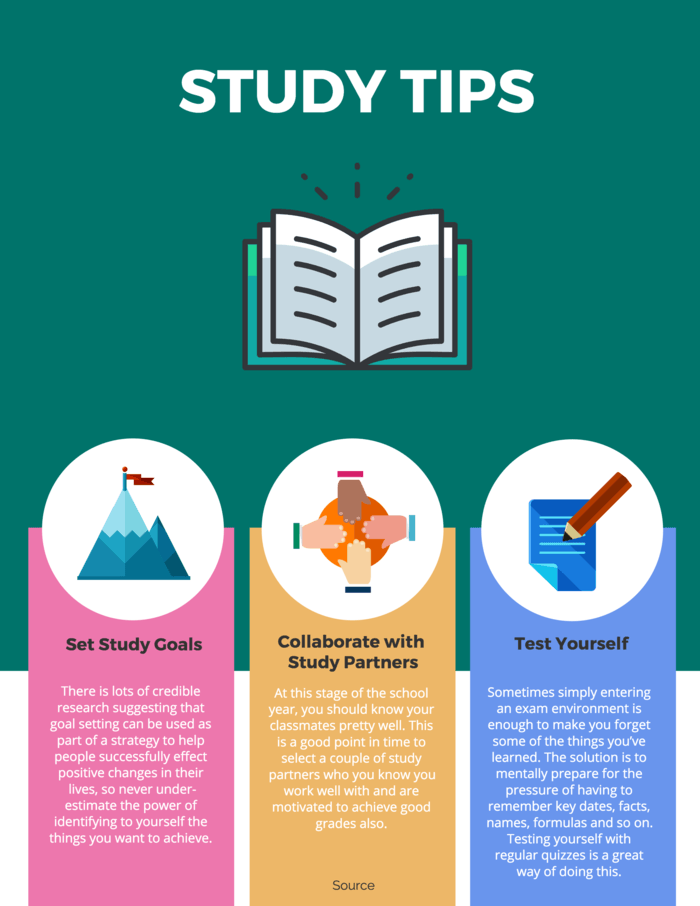
CREATE THIS POSTER TEMPLATE
Meanwhile, this educational poster uses icons to visualize each different type of learner. A poster with this layout this can be useful for introducing students to new or foreign concepts (for example, words in a secondary language) because they can associate each word with a visual.
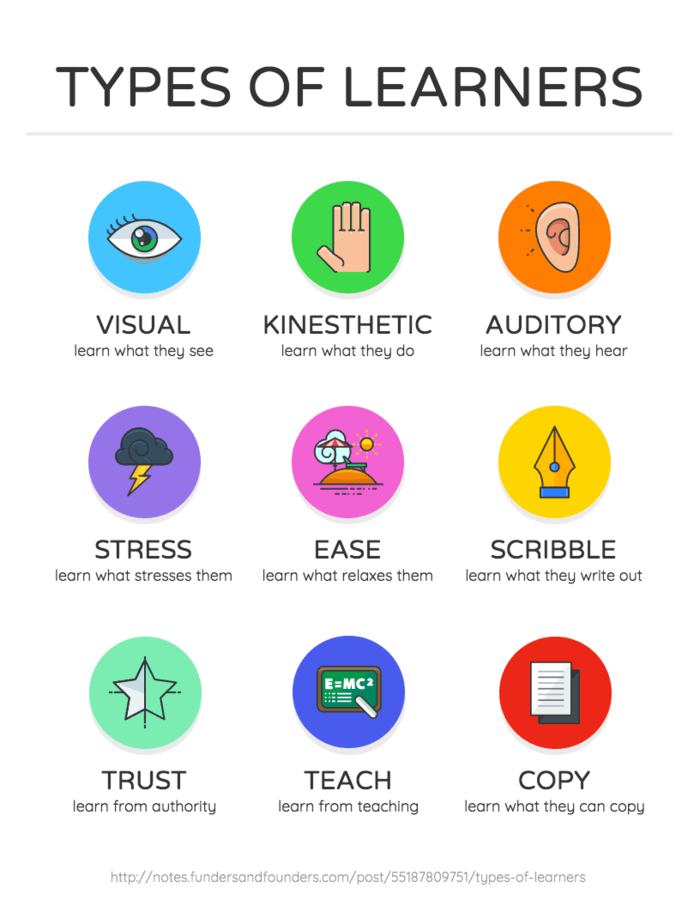
USE THIS POSTER TEMPLATE
2. Educational infographics to simplify complex information
Infographics are a perfect classroom tool because they can make complex information easier to understand.
There are many different types of infographics you can create, depending on the information you want to visualize. For example, you could make an infographic to summarize a new topic , to show a timeline of events, to visualize statistics , to explain a process –and more.
For example, this educational infographic uses a combination of charts, icons and creative text to show statistics about teens and social media. Visuals aids like these can be helpful for students who have trouble wrapping their heads around big numbers.
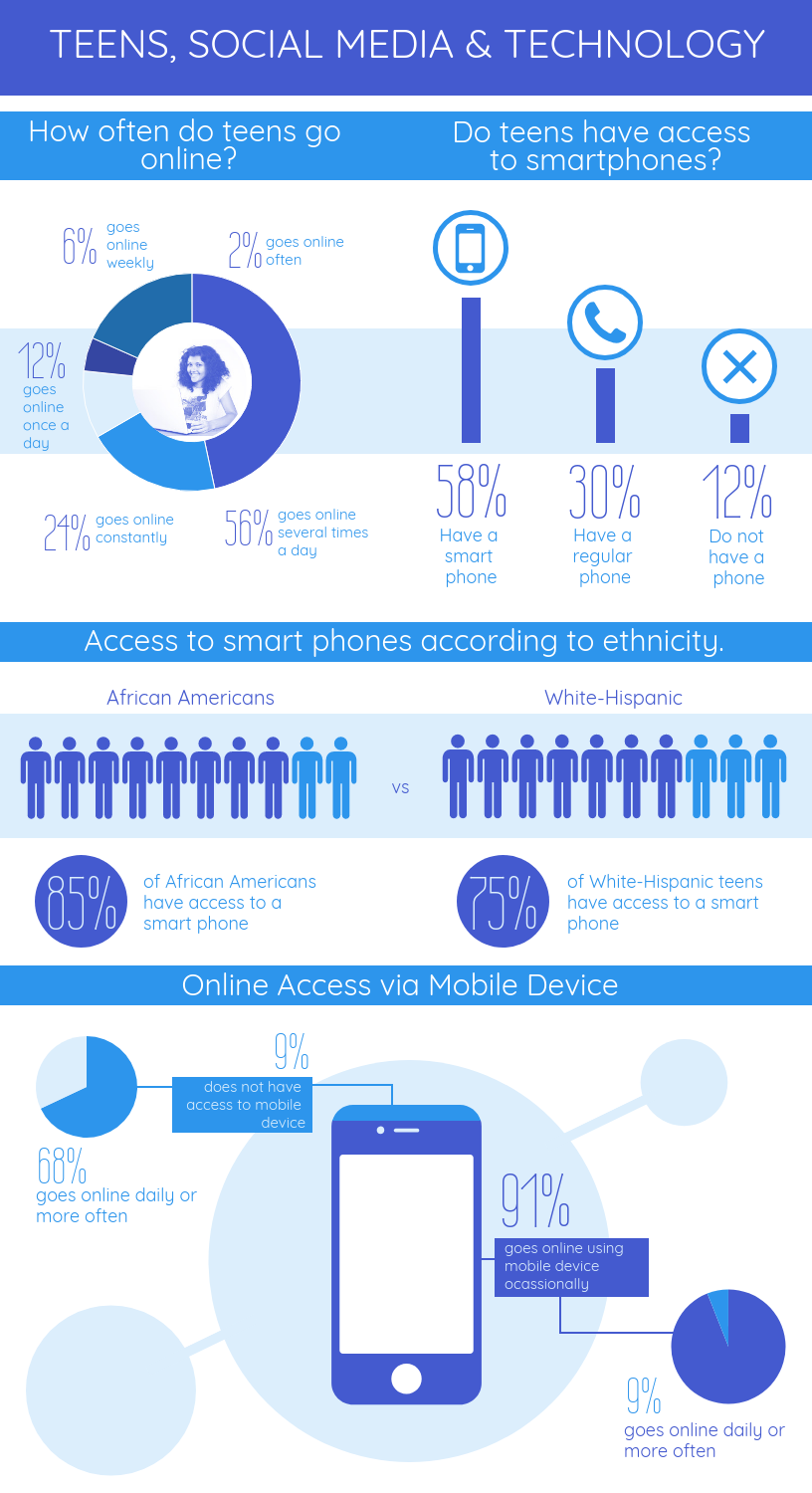
CREATE THIS DEMOGRAPHIC INFOGRAPHIC TEMPLATE
The cool thing about infographics is that there’s so many approaches you can take to create one. And the design doesn’t have to be complicated–just effective.
Related: How to Create a Successful Employee Training and Development Program Using Visuals
For example, this infographic uses a pattern graphic design of colorful circles to represent different vitamins. Associating each vitamin with a color can help students remember each one.

CREATE THIS TEACHING AID TEMPLATE
In data visualization, color plays a bigger role than just for decoration. Color can also be used as a tool to visualize information. Check out our guide to using colors to communicate effectively .
3. Creative presentations to keep students engaged with a lesson
We’ve all sat through boring presentations before. I’m going to go out on a limb and assume you don’t want to be the one delivering a boring presentation!
A creative presentation template can go a long way to keep your students from snoring in the middle of class. For starters, introduce bright colors and creative fonts into your slide design. You can also combine photos, charts and icons to illustrate concepts.
For example, this creative presentation uses a bold color palette that give each slide impact:
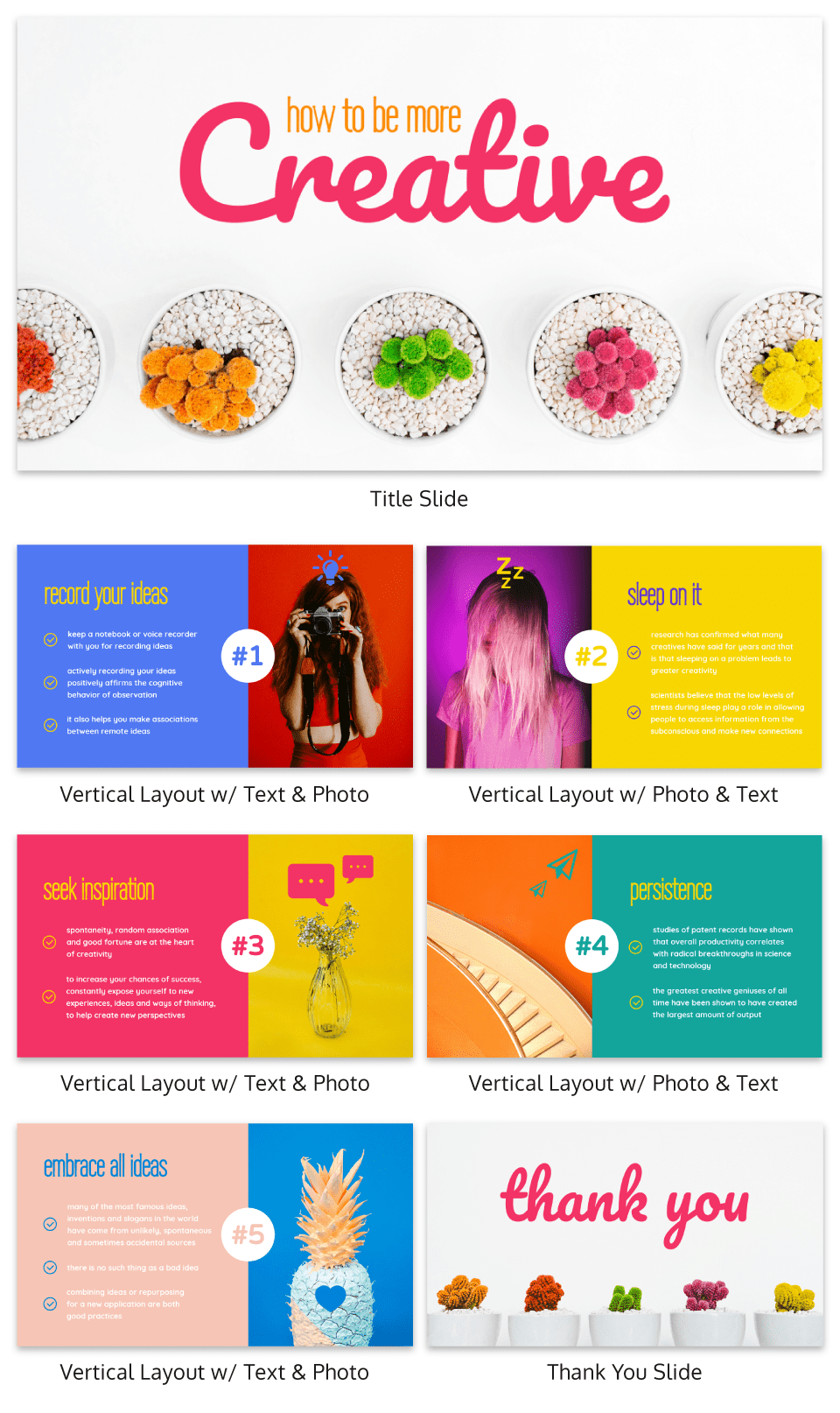
USE THIS PRESENTATION TEMPLATE
The combination of a script font with a more modern font helps makes for an interesting and unexpected design. Simple tricks like mixing and matching styles (as long as they’re complementary) can go a long way in your presentation design .
Related: Storyline: A Starter Guide to Creating Engaging Visual Training Courses
Presenting information in a creative and visually-stimulating way can help get students excited about a topic. This presentation template uses image frames to seamlessly incorporate different pictures of foods into each slide design:
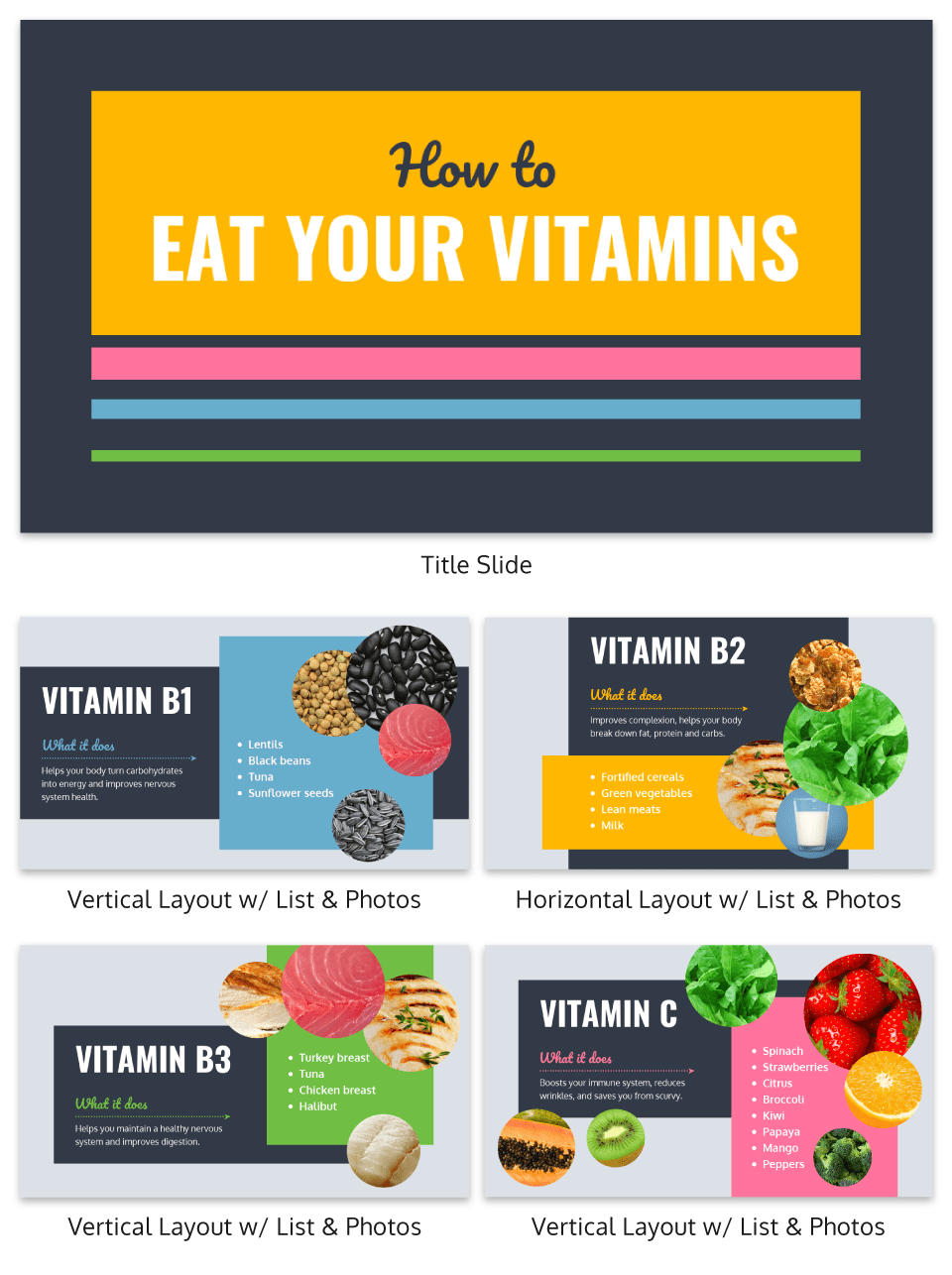
We have a tutorial for using image frames in your design, which you can access here .
4. Educational charts to make data accessible
Simple charts are another great visual aid for an online learning platform . They can make data more approachable, and can also help reveal the stories behind data.
Look for opportunities to present information visually in your presentations, handouts, and reports, and find a chart that fits that type of information. For example, a classic pyramid chart is effective for visualizing a topic in different levels:
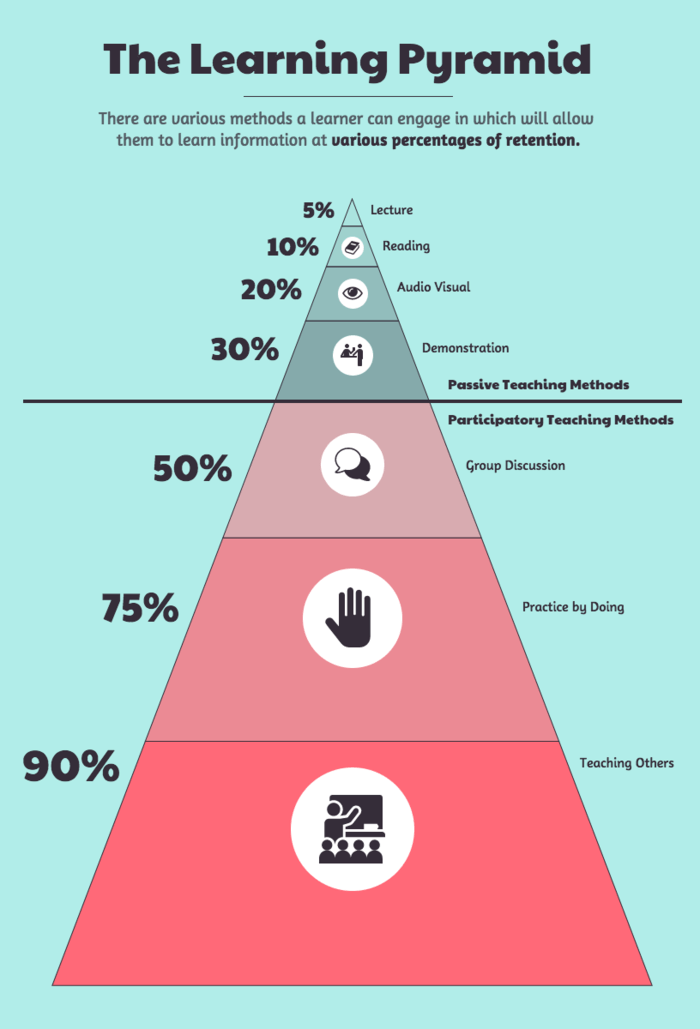
CREATE THIS PYRAMID CHART
Charts are also handy tools for analyzing processes. There are plenty of opportunities for you to include engaging visuals in your staff presentations, personal research, and more.
For example, a common problem that many teachers face is negotiating budgets for their curriculums, programs, and resources. Well-designed visuals can help you make a good case for your budget requests.
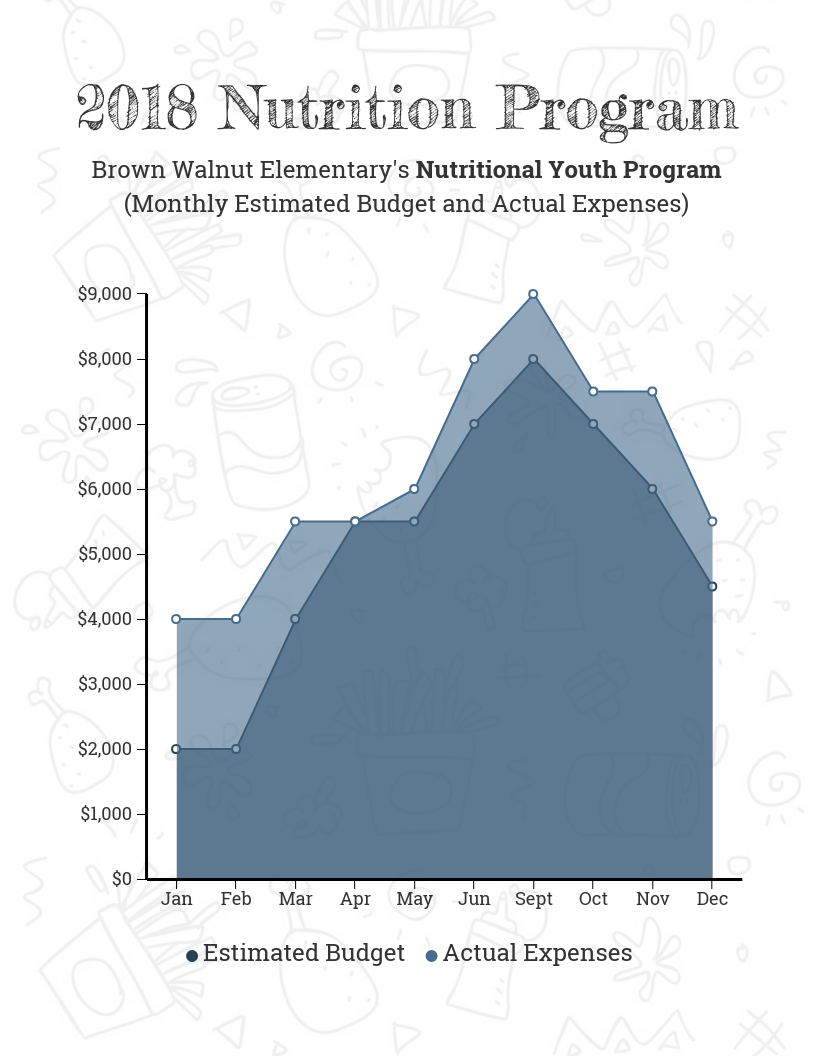
CREATE A CHART
Check out our guide for choosing the best charts for your data .
5. Student assessment reports with an approachable design
Since tracking students’ progress is an important part of a teacher’s job, why not make your student assessment reports more engaging with a creative design?
Younger students at the preschool or elementary school level can find assessments particularly stressful. A fun and playful design can help make a student progress report appear less intimidating.
For example, this progress report template uses a rainbow color palette, with star pictograms representing their grades:
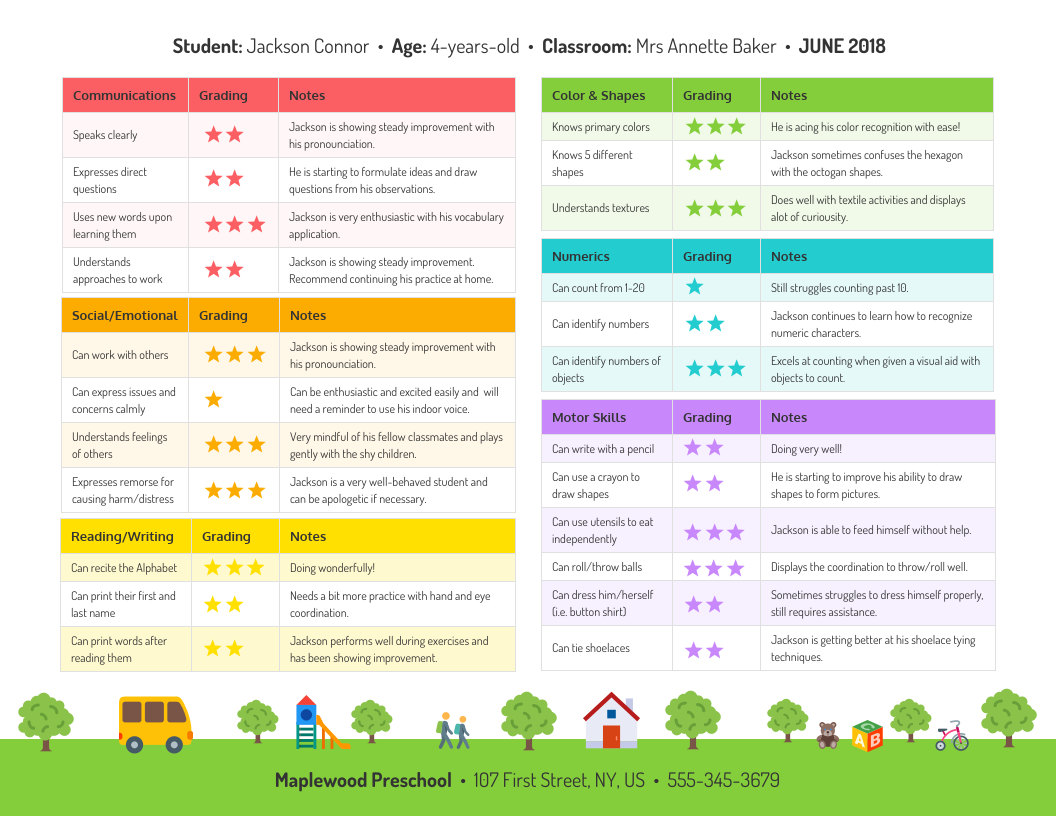
CREATE THIS PROGRESS REPORT
You can also help students and parents understand their progress better by summarizing their progress in a chart. For example, this chart template uses a combination of a pie chart and some simple icons to highlight the main educational areas the student is being assessed on.

USE THIS REPORT CARD TEMPLATE
6. Classroom checklists to keep students, teachers and parents on track
A simple checklist can be a great tool to have in the classroom. From classroom duties to assignments for the semester, there are a lot of things that students need to keep track of.
Adding visual aids to your checklists can help make the points on the list easier to remember. For example, this simple checklist infographic uses icons and a different color for each point:
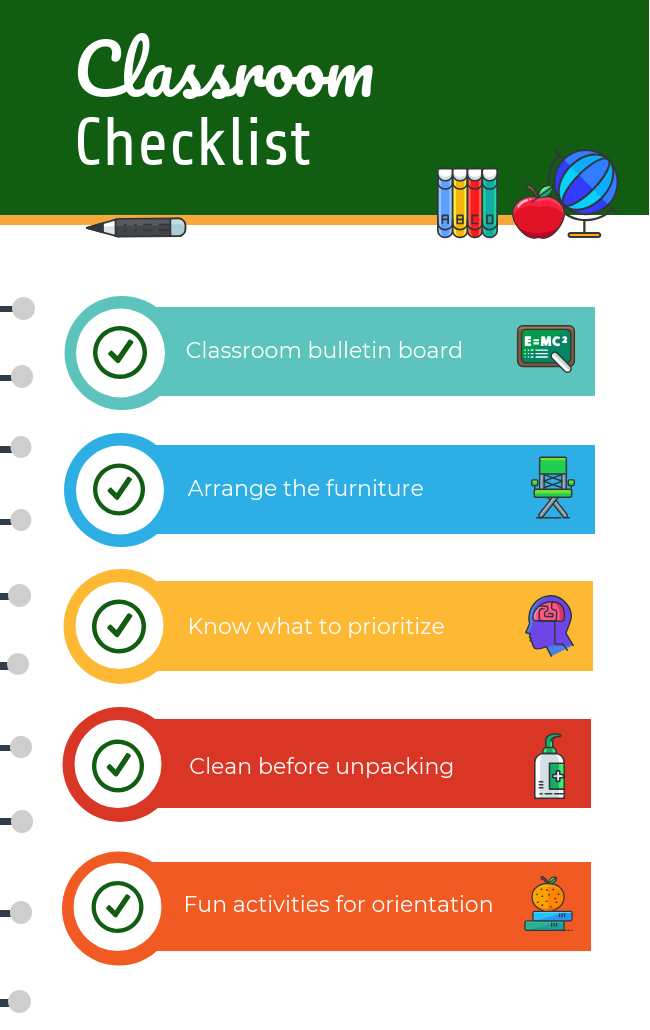
USE THIS CHECKLIST TEMPLATE/button>
A visual checklist can also be useful for staff members, to help them remember tasks or best practices. For example, this checklist template offers tips to guide new teaching assistants:
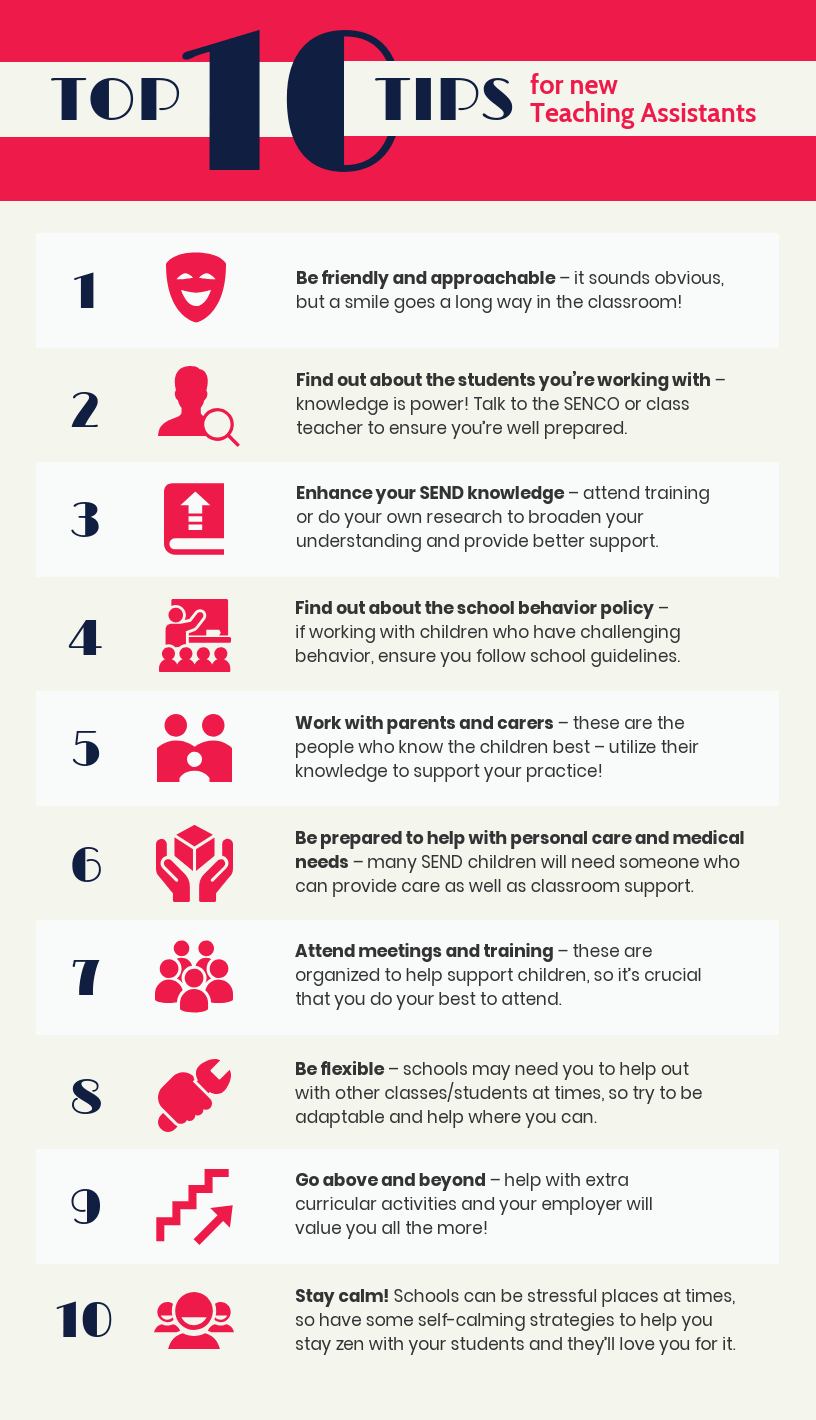
USE THIS LIST INFOGRAPHIC TEMPLATE/button
7. Research reports to make data and insights engaging
If you want to share some interesting research findings with your students, or you want students to share their findings with you, try using a visually engaging report template . A visual report will require you or your students to identify and emphasize the most important pieces of information.
For example, this research report template uses circle icons to emphasize the study’s main findings:
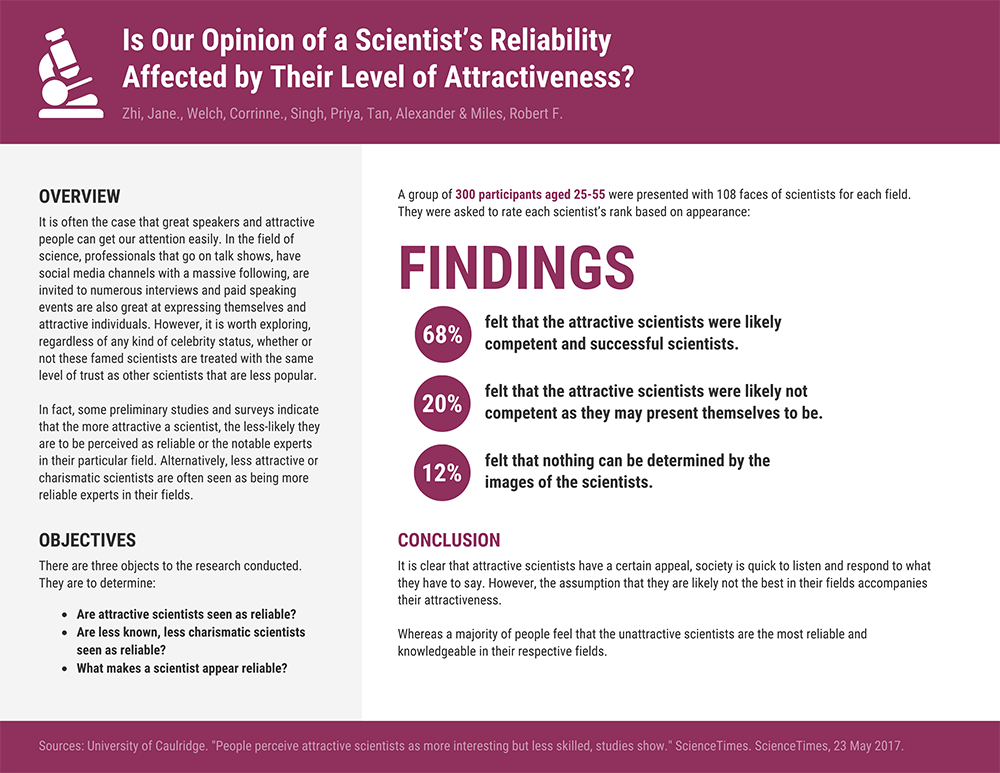
USE THIS REPORT TEMPLATE
Presenting research visually can also help inspire students and staff members. For example, if you want to promote a student organization or a charity, visualizing some surprising statistics can make people stop and think about a cause.

8. School newsletters to get students, parents and teachers excited about events
A classic school newsletter can help keep staff, students and parents on the same page. Why not add some school spirit to your newsletter design ? If you start with a newsletter template, it’s easy to customize the text and visuals for every week or month.
Simply swap out the icons with ones that reflect the theme of each particular newsletter. You can also use image frames to share pictures of events at your school.
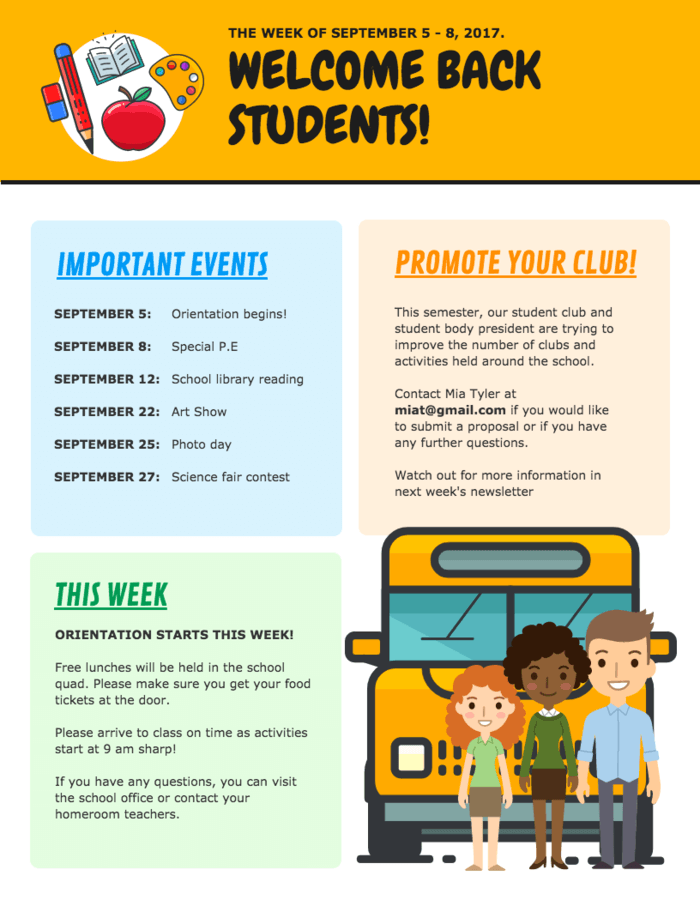
CREATE THIS SCHOOL NEWSLETTER TEMPLATE
Incorporate your school colors and fonts into your newsletter design. For example, this newsletter template uses the school’s colors of orange for the headers and blue for the sub-headers:
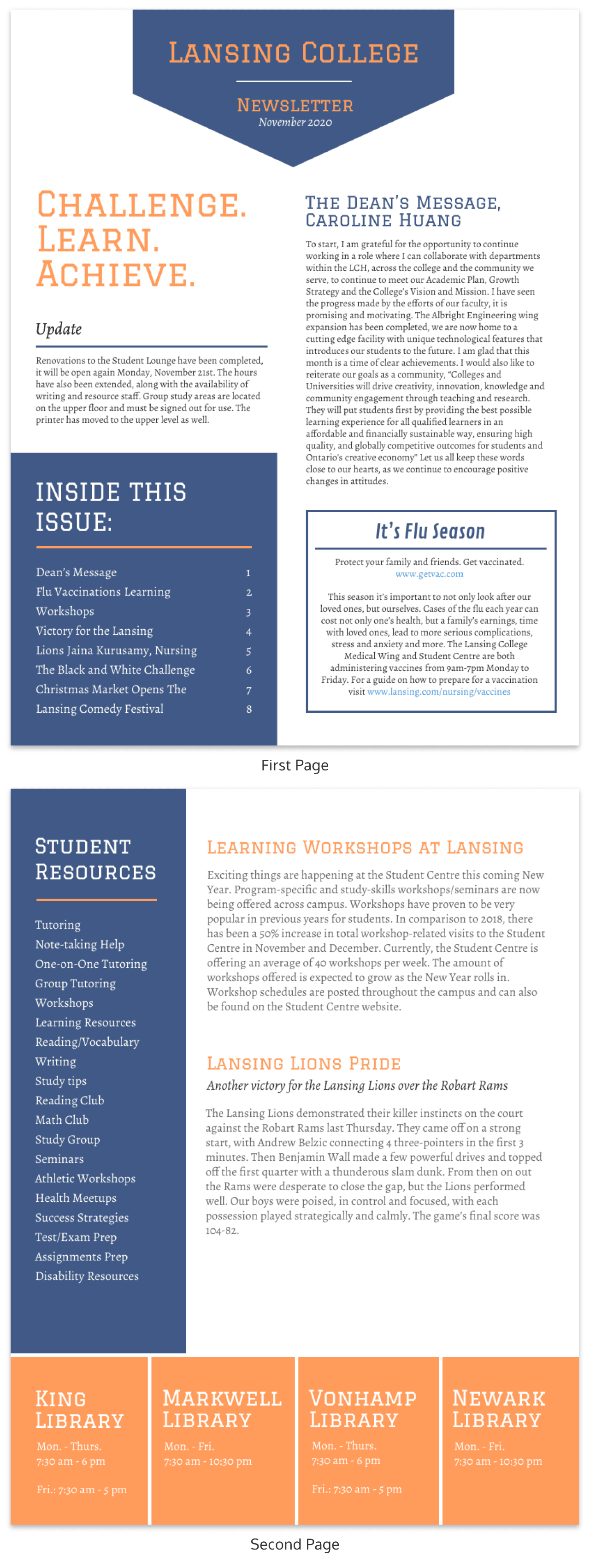
USE THIS NEWSLETTER TEMPLATE
Our newsletter maker offers a ton of creative newsletter templates. Why not try it out?
9. Education calendars to keep students, parents and teacher informed
Both teachers and students have a lot to keep track of. Adding some design flare to your calendar will make it a fun visual aid you can hang up in your classroom, or include to parents in an email.
Look for ways to organize the information so nothing is missed. For example, the lefthand column in this calendar template identifies the focus of each week, using an image to illustrate the ideas. This makes it easy for students to glance at the calendar and have an idea of what’s going on.
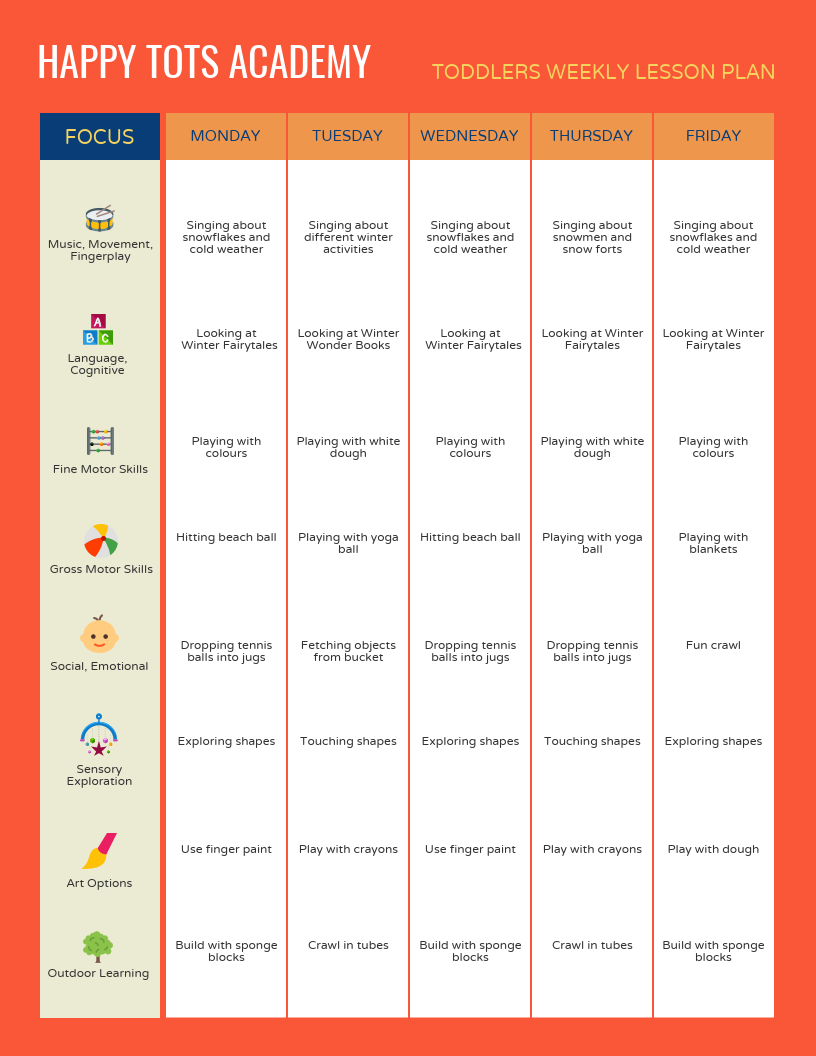
USE THIS CALENDAR TEMPLATE
10. Lesson plans to help you stay organized and to inspire other educators
As an educator, you no doubt understand the importance of being organized. Incorporating visuals into your lesson plan can make it easier for you to scan for information. It can also help inspire your creativity about a subject!
Since organization is key when it comes to lesson planning, you don’t have to go overboard with the design. Some simple design elements like icons, colorful headers, and a thematic footer can breathe life into a mundane lesson plan.
And if you want to share your lesson plans on a personal blog or with other teachers in your school, making your lesson plan engaging will make all the difference!
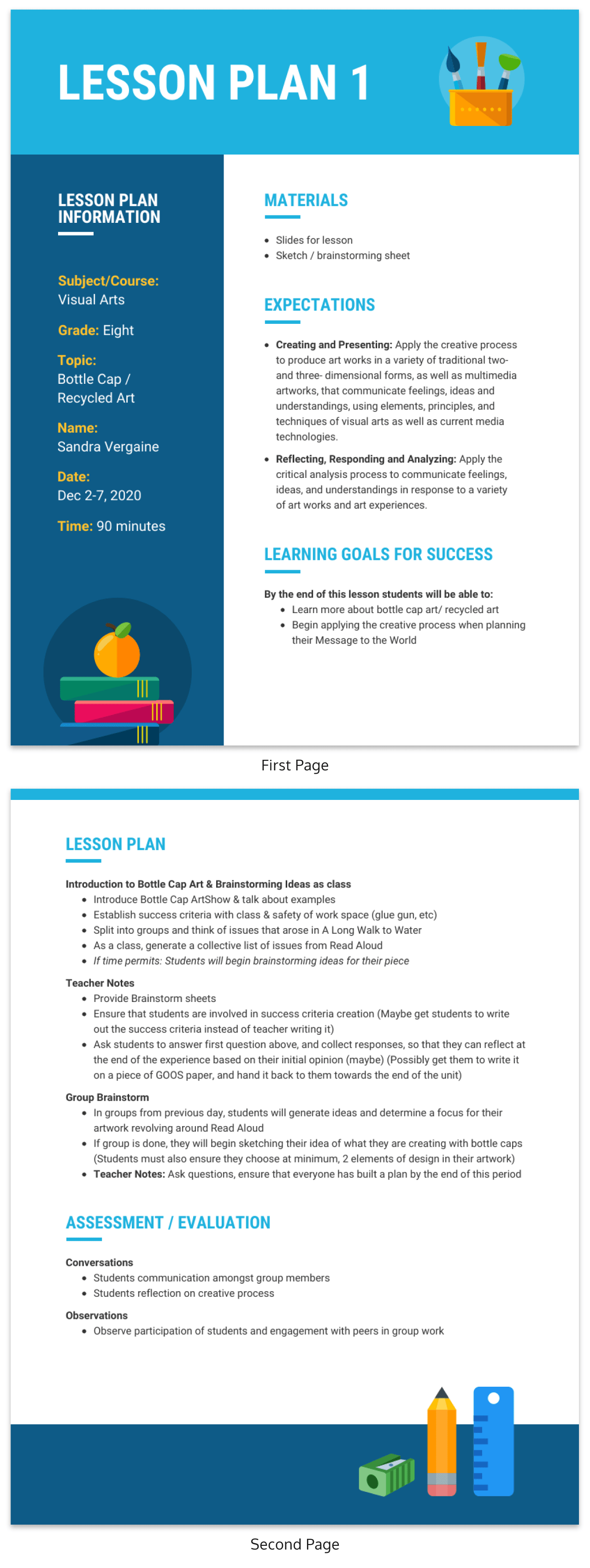
CREATE THIS LESSON PLAN TEMPLATE
Read More: 27+ Lesson Plan Examples for Effective Teaching
A few things to keep in mind when designing visual aids for learning:
- Make sure your information is organized and easy to understand–even if that means toning down the design.
- On that same note, keep designs relatively simple and keep text concise.
- Look for ways to visualize information using charts, pictograms, icons, and images.
- Customize templates for things like newsletters, reports, and calendars so you can easily reuse them.
- Export your teaching aids as high quality PNGs or PDFs so they will look good when you print them.
These are just a handful of the different types of visual aids for learning that you can use in the classroom. Are there any other visual aids that you like to use in your classroom? Share your tips in the comments!
What Is Your Teacher Personality Type? [QUIZ + INFOGRAPHIC]
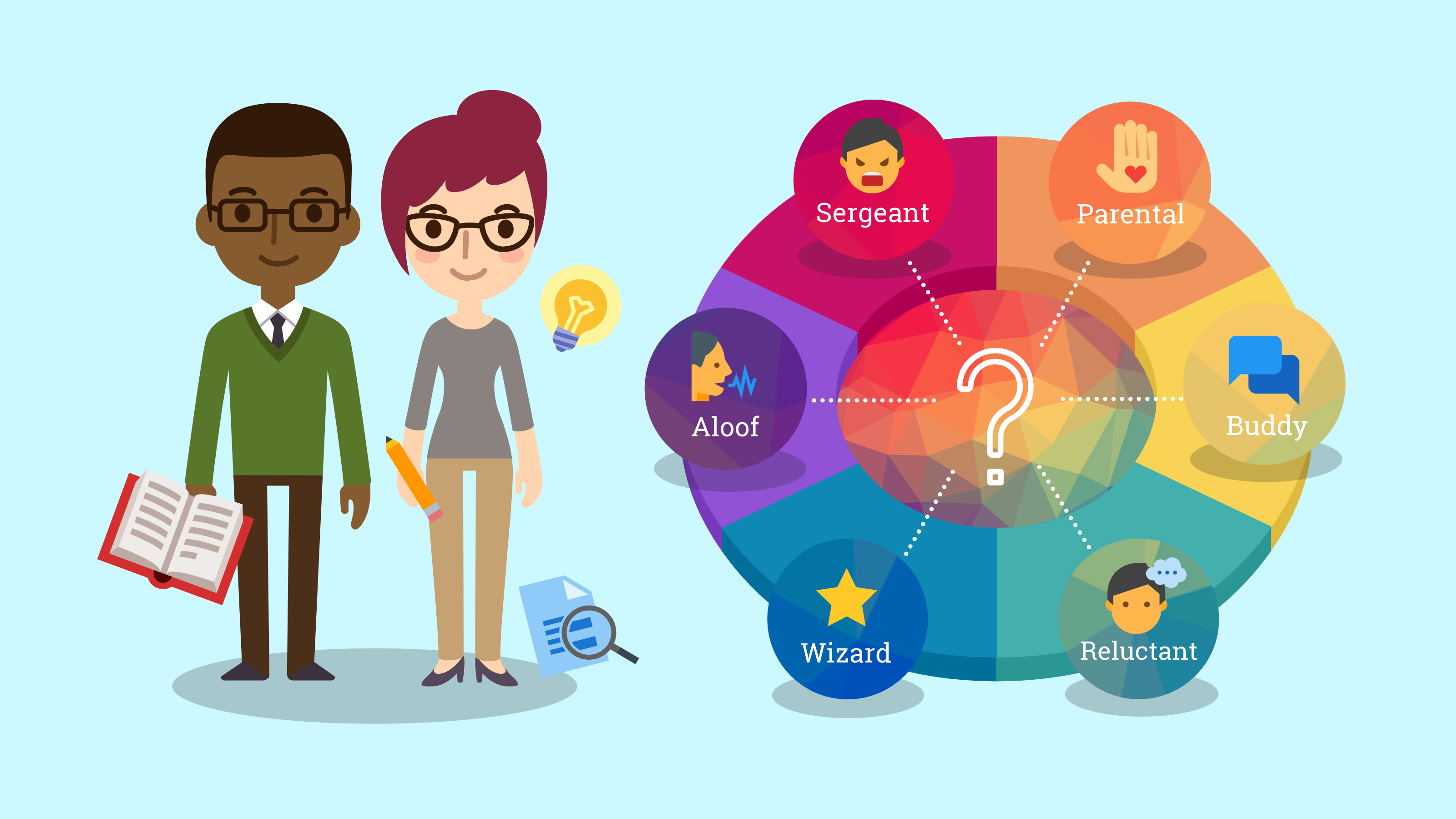
8 Examples of How Middle Schools Can Incorporate Infographics in the Classroom

Discover popular designs

Infographic maker

Brochure maker

White paper online

Newsletter creator

Flyer maker

Timeline maker

Letterhead maker

Mind map maker

Ebook maker
The Federal Register
The daily journal of the united states government, request access.
Due to aggressive automated scraping of FederalRegister.gov and eCFR.gov, programmatic access to these sites is limited to access to our extensive developer APIs.
If you are human user receiving this message, we can add your IP address to a set of IPs that can access FederalRegister.gov & eCFR.gov; complete the CAPTCHA (bot test) below and click "Request Access". This process will be necessary for each IP address you wish to access the site from, requests are valid for approximately one quarter (three months) after which the process may need to be repeated.
An official website of the United States government.
If you want to request a wider IP range, first request access for your current IP, and then use the "Site Feedback" button found in the lower left-hand side to make the request.

IMAGES
VIDEO
COMMENTS
Audio visual aids - Download as a PDF or view online for free. Audio visual aids - Download as a PDF or view online for free ... Assignment submitted by students of 5EEE of batch 2012-16,Amity University. Members: Subhanshu Arora - A2324612065 Shubhangi Saxena - A2324612070 Anshul Ghalyan - A2324612053 Devashish Raj - A2324612075.
Audiovisual aids are essential tools for teaching the learning process. It helps the teacher to present the lesson effectively, and students learn and retain the concepts better for a longer duration. The use of audio-visual aids improves student's critical and analytical thinking. It helps to remove abstract concepts through visual presentation.
1.1 Use of Audio-Visual Aids in Teaching and Learning. Using audio-visual aids in teaching and learning has revolutionized education, offering an innovative and dynamic approach to classroom instruction. Audio-visual aids incorporate visual and auditory elements into the teaching process, such as videos, images, animations, and sound clips.
Effective instructors realize the importance of audio visual materials in teaching and learning . Without audiovisuals, students may struggle to comprehend new concepts and lose interest in school. Integrating AV aids into a lesson plan adds interests, deepens understanding and aids recall.
The use of audio-visual materials in education is crucial today since it improves student learning. This is one of the reasons why the usage of audio-visual aids in teaching and learning has grown over time. Students can now share knowledge with others much more quickly and with instant access. Additionally, learners can now comprehend ideas ...
Assignment audio visual aids - Free download as PDF File (.pdf), Text File (.txt) or read online for free. The document discusses the effective use of audio-visual aids in presentations. It notes that visual aids can supplement speeches and make them more engaging when used properly. However, too many aids can distract from the speaker. The document provides tips on selecting, designing, and ...
We have but four simple basic rules that we subscribe to in the use of audio-visual aid in training programs. If these four general rules are kept in mind, use of a/v materials can be very effective. Rule No. 1: Audiovisual aids should be confined to a single concept.
PDF | On Feb 26, 2021, S. Jindal and others published audio visual aids | Find, read and cite all the research you need on ResearchGate
Audio-visual aids have become indispensable tools in modern communication and education. From enhancing presentations to revolutionizing learning experiences, these aids have the power to captivate, inform, and inspire audiences. Incorporating the right audio-visual aids can create a significant impact on how information is perceived and retained.
Audio visual aids help a teacher in teaching learning process. Instructional aids are not self- ... Assignment Sheet: These include problem sheets, reading lists, lab sheets, briefing sheets for ...
Audio -visual aids are the best tool for making teaching effective and the best dissemination of knowledge .So there is no doubt that technical devices have greater impact and dynamic informative system. ... environment 3.27 19 A.V aids make learning long lasting 3.28 20 A.V aids provide help to students in different assignment 4.21 Table shows ...
Audio visual aids have a good impact upon student and teachers and make the lecture more interesting. They play a vital role in focusing the attention of learner towards the topic. Uses of technological tools enhance learning. The progress of nation depends upon the education and research. Curriculum changes are moving fast, education is ...
Describes the basic audiovisual equipment and audiovisual aids and how to use them. For materials which can be teacher developed materials or student developed materials simple production techniques are described - The main instructional materials treated are: tape recorders, display boards, projection equipment, including film projectors and overhead projectors, teaching machines, closed ...
Audio Visual Aids Definition. According to Burton. These are sensory objectives and images which stimulate and emphasis on learning process. Carter V. Good. It is a trainable (motivation, classification and stimulation) process of learning. Objectives of Teaching Aids. To enhance teachers skills which help to make teaching-learning process ...
Teaching aids are also called audio-visual aids. Contemporary teaching aids that are in use provide stimulation to ears and eyes together compared to the traditionally used teaching aids that stimulated only one sense organ. The emerging teaching aids involve other sense organs (Đurđanović, 2015). These teaching aids are visual aids
Assignment AV-Aids-File-Msc-Nursing-1st-year.MD_Final - Free download as Word Doc (.doc / .docx), PDF File (.pdf), Text File (.txt) or read online for free. This document discusses audio-visual aids and their use in education. It defines audio-visual aids as sensory objects or images that stimulate and reinforce learning. The purposes of audio-visual aids are to supplement teaching, serve an ...
The most prevalent use of audiovisual technology in the classroom is multimedia presentations. This method is easily accessible for educators, and the most important, piece is that 65% of people are visual learners. Presentations are proven to increase students' ability to absorb information because they are encouraged to engage with the ...
The range of techniques is great, with possibly the best results being gained by a linking of established or conventional methods of teaching with audio-visual aids, including the latest developments. 29Chapter II VISUAL AIDS A N D INTERNATIONAL U N D E R S T A N D I N G IN THE S C H O O L CURRICULUM The reform of the school curriculum is a ...
Audiovisual aids are the instructional aids that are frequently used to aid teaching. It helps teacher to impact all senses of students and make teaching learning meaningful and attractive.
av AIDS file assignment effective teachniqe for teaching thanks for watch this vidio
Here are 10 types of visual aids for learning that will engage students and help you plan and deliver lessons more effectively. I've also included some design tips to help you get started. 1. Educational posters to inspire and remind students. Educational posters are a classic teaching aid that can breathe life into a classroom.
A Brief Explanation of Audio Visual Aids, it's Classification and Role of Teacher in Procurement and Management of AV Aids October 2020 DOI: 10.13140/RG.2.2.35093.19682
Year MBBS Student's preference for different Audio visual aids in Medical education to various parameters (N=100) Parameters C&B OHP PPT C&B + OHP C&B+PPT 1.Lectures easy to understand is by: 13 ...
FEMA may task other Federal Agencies to assist during disasters and to support emergency efforts by STT governments by issuing a mission assignment to the appropriate agency. See44 CFR 206.5, 206.208. FEMA collects the information necessary to determine what resources are needed and if a mission assignment is appropriate.